
The Bottom Line
Introduction, Quick Specs, Availability & Price
Introduction 1.0
When AMD unveiled the three new HBM-powered Radeon cards, I was most excited over the super-small Radeon R9 Nano. Sure, the Radeon R9 Fury X was the enthusiast card with the most performance, but the AIO cooling system was just such a turnoff for me. The Fury (non-X) was exciting, as it offered Fury X-like performance, without the huge cooler. Unfortunately, the card was just absolutely huge.
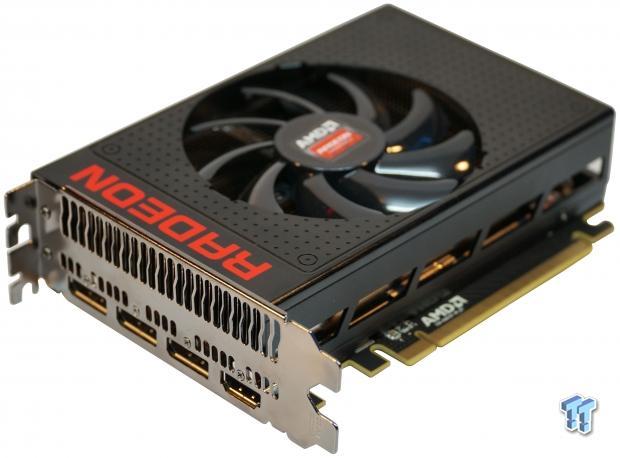
This is where the R9 Nano steps in. It is offering performance within the vicinity of the Fury and Fury X, in a tiny card that just barely tips over the edge of the x16 PCIe port it gets installed into, requires a single 8-pin PCIe power connector, and has a reference air cooler. In my opinion, this is the video card AMD should've led with.
The Radeon R9 Nano is in such an interesting position for AMD, as this is positioned as the lowest of the three Fiji-based cards. We have the R9 Nano, followed by the R9 Fury, which leaves the top of the heap for the Fury X. But I think, if it were up to me, the R9 Nano would've been the card I led with. AMD should've had the R9 Nano out first, as it is the most impressive of the three.
There's no card like it from NVIDIA in reference form at least, with the closest card in physical dimensions being a GTX 970 from ASUS. But the R9 Nano is in a completely different league. It's so unique, that I think it sits on its own, and that is both a good, and bad thing. We've also now introduced 3440x1440 UltraWide 21:9 benchmarks into our video card reviews. The AMD Radeon R9 Nano is the first card we've reviewed with the 3440x1440 results, so we hope you enjoy our new change in our video card content!
Introduction 2.0
We're changing things up in more ways than one in this review, as we're going to address the shortage of R9 Nano samples to our friends at other sites. I'm sure that you've read that other large tech sites didn't get sampled on the R9 Nano, and there are going to be so many discussions on why X site got it, and Y site didn't. Well, if you remember back to our Fury X review, I wasn't too fond of it. It was a good card, but nothing great. HBM didn't provide huge performance benefits as we were told it would, and I simply hated the AIO cooler. AMD knew this, and yet we still found ourselves with samples rolling in.
Moving onto the Radeon R9 390X, where we called it a "rehash of the R9 290X", because that's what it is. The R9 390X is a rebrand, but AMD won't look at it that way. Yet, we got samples of the air-cooled R9 Fury. Fast-forward to today, and we have R9 Nano video cards, not just one. We haven't done anything different to other sites, we stay as impartial as we can - and we call it how it is.
The Fury X is not that great, you should all know my opinion on that by now. Heck, look at the headline to this review: "The Fury X is Dead" - if that's not proof enough, then I don't know what is. Here we are once again, with another review that is so split down the middle - the R9 Nano impresses, but is still not the card to pull AMD out of the hole it's in. We exclusively reported about only 30,000 cards from AMD released powered by the Fiji architecture and HBM, which would make sense looking around e-tailers and retailers around the world - and if you take into consideration the R9 Nano samples to media, it makes more sense. Then the fact that NVIDIA has a huge 82% of the discrete GPU market. I don't think AMD can come back from that, even with the R9 Nano.
Quick Specs
The R9 Nano is virtually the same as the Fury X, with the same 4GB of HBM1 and the same Fiji GPU. Where AMD has done things differently, is that there's an included fan, versus the huge AIO watercooler that the Fury X shipped with. We still have HDMI 1.4 on the R9 Nano, which is a massive limitation, but the single 8-pin PCIe power connector is a big win for AMD.
Availability & Price
We don't know how many Radeon R9 Nano cards will be available at launch, but we do know it will be priced at $649. We did exclusively report about the low yields on HBM, where we could see just 30,000 cards powered by HBM before the end of the year. This number is very, very low - and with the number of samples of the R9 Nano being offered to the press, and the real-world availability of the Fury cards, I think this is becoming more and more true.
Detailed Look
The R9 Nano is one of the best reference video cards AMD has ever made, with it being in my opinion a better looking card than the Fury X. The R9 Nano is a tiny card, with a large fan that keeps it 'library quiet' according to AMD.
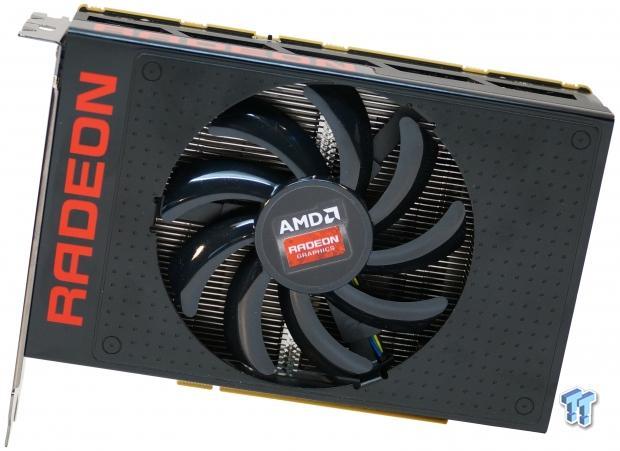
Starting off with the front of the card, we have a full metal shroud around the card, backed up by a beautiful brushed aluminum finish. AMD has used a matte black PCB which really adds to the look of the card, while we have Radeon branding down the front of the card - which unfortunately, doesn't glow red.
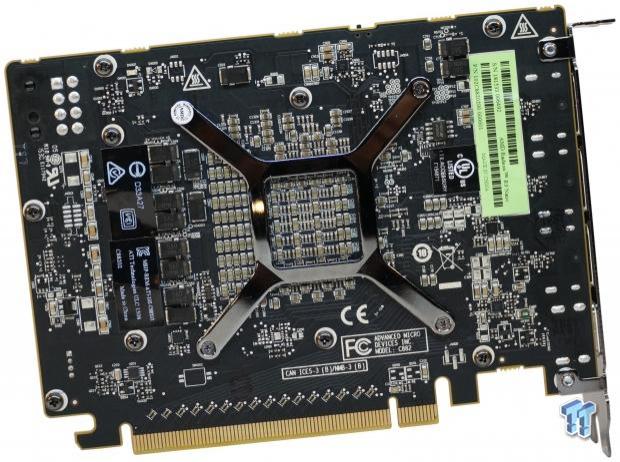
The rear of the card doesn't have much, apart from a bracket that is keeping the entire interposer, GPU, and HBM in place. I would've preferred a back plate to continue the sleek look of the R9 Nano, but unfortunately, we don't get that.
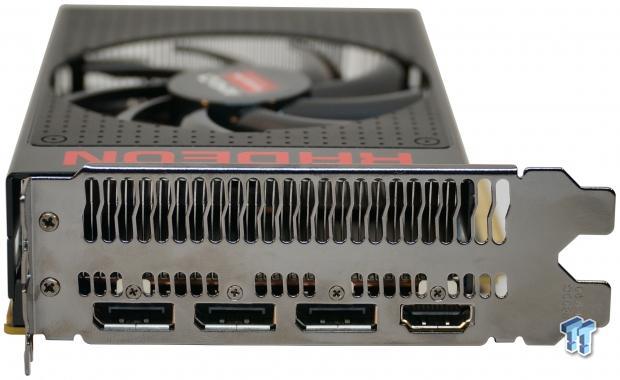
Moving over to the display connectivity on the R9 Nano, AMD has provided 3 x DisplayPort and 1 x HDMI 1.4 (big note: this isn't HDMI 2.0 which is capable of 4K at 60Hz, it's limited to 4K at 30Hz - but more on that later).
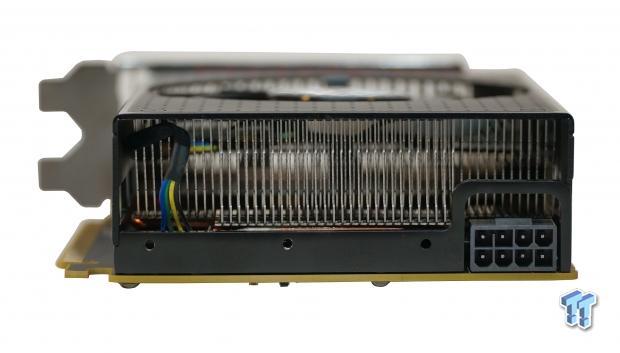
At the end of the card, we have a single 8-pin PCIe power connector that powers the Fiji GPU and HBM, using just 175W of power. We can see the elaborate heat sink that AMD has used to keep its Fiji GPU and HBM nice and cool, replacing that huge annoying AIO cooler that the Fury X needs.
Card Specifications & Cooling Setup
Card Specifications
The R9 Nano is virtually a full Fury X card, with the same Fiji GPU and HBM technology. We have 4096 stream processors, with the Fiji GPU clocked at 'up to' 1GHz resulting in 8.19 TFLOPS of performance. AMD has used 256 TMUs, 64 ROPs, and 4GB of HBM spread out on a 4096-bit memory bus which provides up to 512GB/sec of memory bandwidth. These specs, are all identical to the Fury X apart from the GPU clock where the Fury X reaches up to 1050MHz.
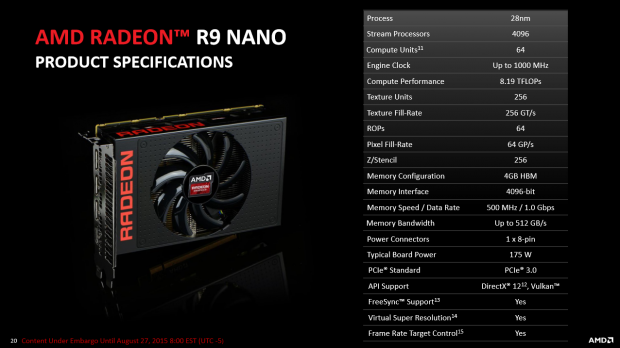
Where the R9 Nano does things different, is that it requires just a single 8-pin PCIe power connector using just 175W of power. Comparing this to the 8+6-pin PCIe required on the Fury X and its 275W TDP, AMD has made some dramatic internal changes to the R9 Nano. We still have DirectX 12 and Vulkan support, as well as FreeSync, Virtual Super Resolution, and Frame Rate Targeting Control being featured on all of AMD's latest Fiji-powered offerings.
Cooling Setup
This is the one major area which defines the R9 Nano, is that it has a target GPU temperature of 75C. Under load, the R9 Nano will reach 75C quite easily (and boy can you feel the heat being pumped out of the card) which is 20C lower than the 95C ceiling on the Hawaii-based Radeon R9 290X.
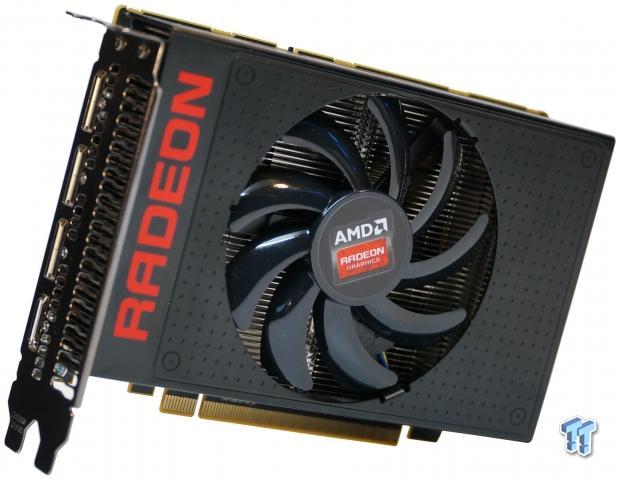
If the R9 Nano needs to be pushed above 75C, it will reach an absolute maximum of 85C, something it does "without comprising on fan acoustic or engine clocks", according to AMD. Yet, during our testing, we had some very serious whine and annoyance from the card. While I write this review, it is making some of the most annoying noise I've ever heard from a video card. It's absolutely distracting.
I talked to AMD about this where I was told it could possibly be a fan-related issue, but it's not, as you can tell the difference between a fan issue and a whine. The whine only happens under load, while the fan gracefully spins keeping the Fiji GPU cool.

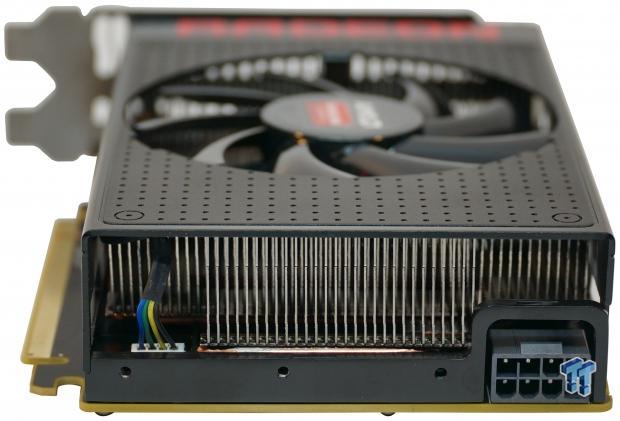
The R9 Nano itself uses a dual vapor chamber mixed with a heat pipe thermal solution to keep its Fiji GPU and HBM under its 75C operating temperature, and holy heck does the card blow some hot air into the system. This is both a good and bad thing, as it's going to pump some seriously hot (75C+) air into your PC. That's not exactly what you want in a tiny gaming PC, is it?
Testing Method & Test System Configuration
Testing Method
I've played Battlefield 4 on a 64-player server to provide some real-world performance numbers. I've found this is one of the best ways to provide the most realistic performance numbers, as it involves actual gameplay in a large server that really strains most setups.
For now, I'm going to be using the same suite of benchmarks I've been using on my Tweakipedia articles, which uses a mix of synthetic benchmarks with Futuremark's 3DMark and Unigine Heaven. After that, we have a bunch of titles with built-in benchmarks (which does not represent actual in-game performance) but they are repeatable for you at home to gauge the performance of your PC or GPU.
Over time, I will be adding in new benchmarks and a new section that will concentrate solely on real-time gaming benchmarks. This will take more time per review, as I'll have to invest time into actually physically playing the games, but it'll be worth it in the long run. For now, let's get right into the synthetic benchmarks and see how this video card performs.
Battlefield 4 Testing
This is one game that we did differently, as it does not feature a built-in benchmarking feature. When it comes to Battlefield 4, there are countless ways you can benchmark it. Some find a spot in the single player campaign which is easily repeatable, and use that. For our testing, we've chosen to use a 64-player online multiplayer server for real-time performance statistics.
We joined a 64-player map and played for five minutes using FRAPS, pulling our minimum/average and maximum FPS. We did this for each test, we run the game for 5 minutes at 1080p/1440p and 4K. We are using a custom Ultra preset (disabling AA). It's time consuming, but it gives us a perfect look into true real-world performance.
Test System Configuration
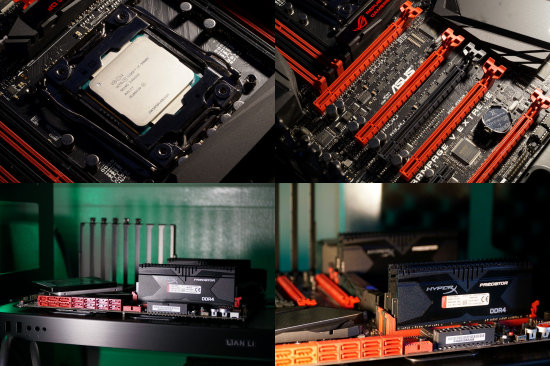
We have another new start for VGA benchmarking adventures, where not only are we adding in 3440x1440 results, but we've also shifted to a high-end Core i7-5960X to remove any potential CPU bottlenecks. Corsair sent us over their kick-ass AX1500i PSU, which provides 1500W of power for our 3- and 4-way GPU testing that we have coming very soon.
Anthony's Video Card Test System Specifications
- Motherboard: ASUS Rampage V Extreme - Buy from Amazon / Read our review
- CPU: Intel Core i7 5960X - Buy from Amazon / Read our review
- Cooler: Corsair H110 - Buy from Amazon / Read our review
- Memory: Kingston 16GB (4x4GB) HyperX Predator DDR4 3000MHz - Buy from Amazon
- Storage #1: SanDisk Extreme II 240GB - Buy from Amazon / Read our review
- Storage #2: Intel 730 Series 480GB - Buy from Amazon / Read our review
- Case: Lian Li PC-T80 Open-Air - Buy from Amazon
- Power Supply: Corsair AX1500i - Buy from Amazon / Read our review
- OS: Microsoft Windows 7 Ultimate 64-bit - Buy from Amazon
- Drivers: NVIDIA GeForce 355.65 and AMD Catalyst 15.7.1
Benchmarks - Synthetic
3DMark Fire Strike - 1080p
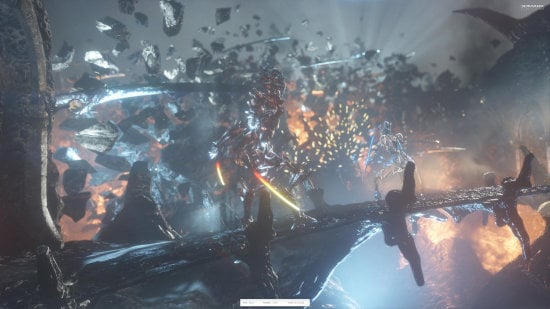
3DMark has been a staple benchmark for years now, all the way back to when The Matrix was released and Futuremark had bullet time inspired benchmarks. 3DMark is the perfect tool to see if your system - most important, your CPU and GPU - is performing as it should. You can search results for your GPU, to see if it falls in line with other systems based on similar hardware.
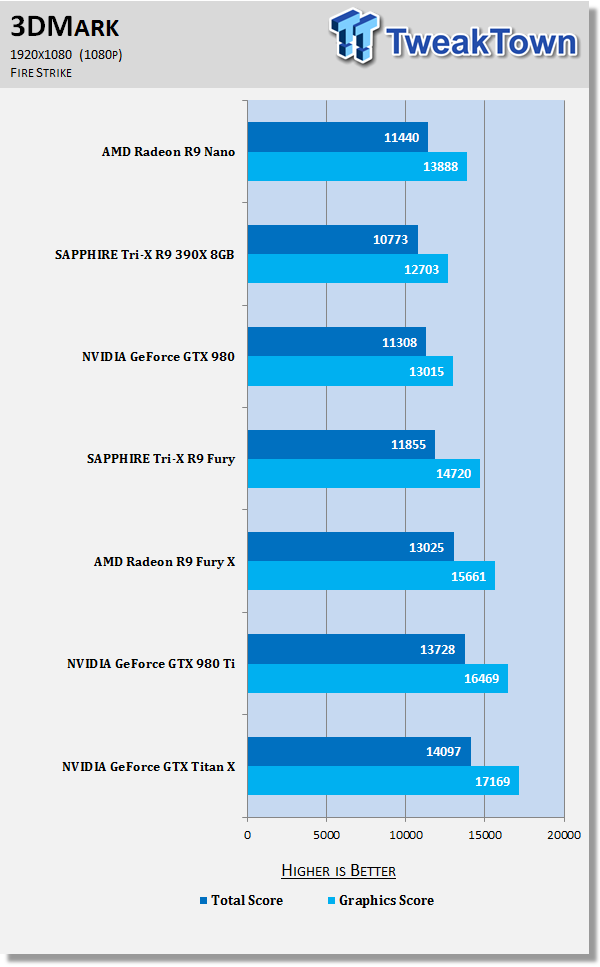
3DMark Fire Strike Extreme - 1440p
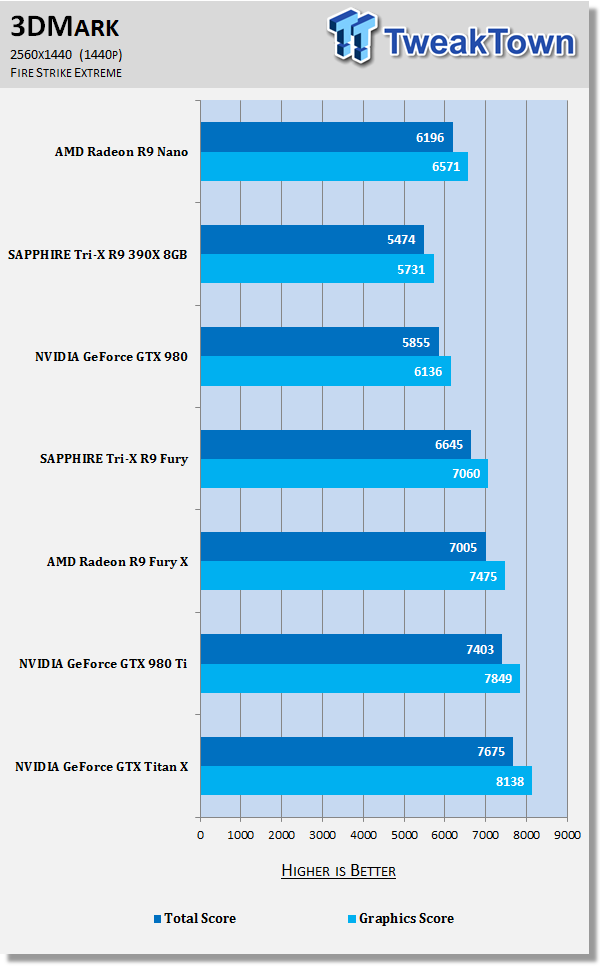
3DMark Fire Strike Ultra - 4K
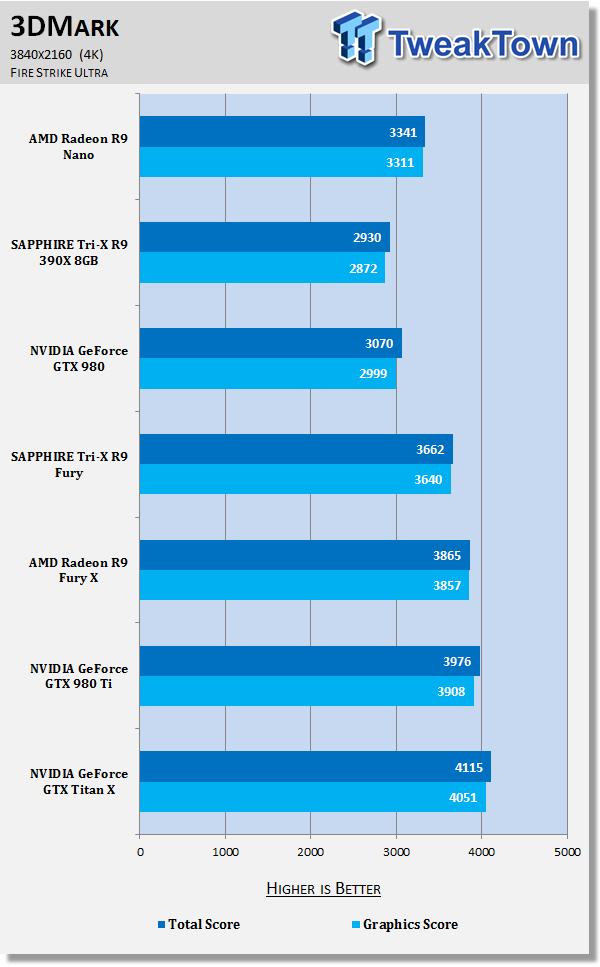
Heaven - 1080p
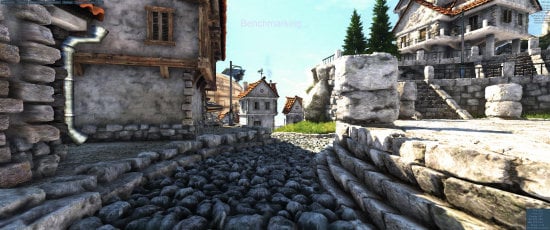
Heaven is an intensive GPU benchmark that really pushes your silicon to its limits. It's another favorite of ours as it has some great scaling for multi-GPU testing, and it's great for getting your GPU to 100% for power and noise testing.
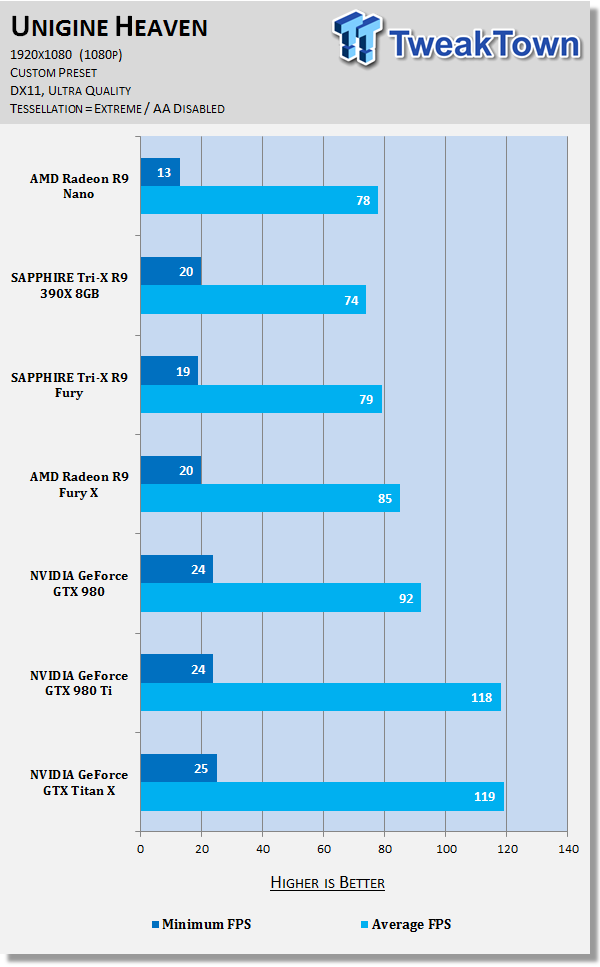
Heaven - 1440p
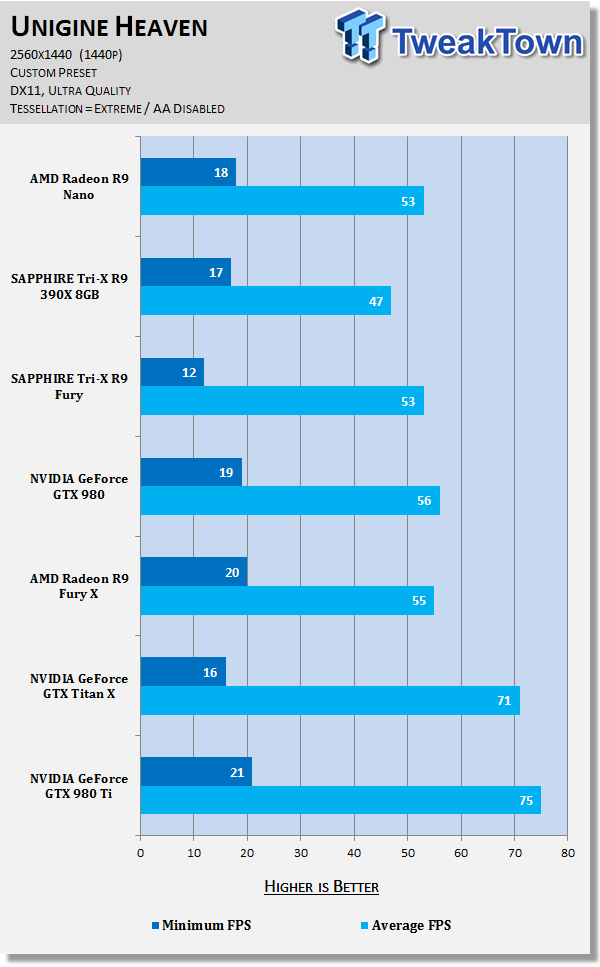
Heaven - 4K
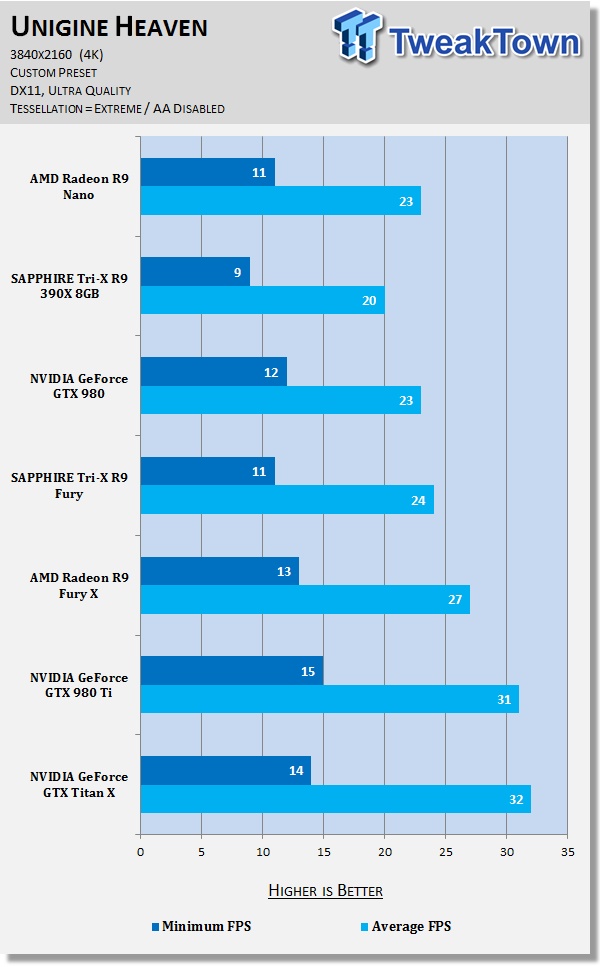
Heaven - 3440x1440
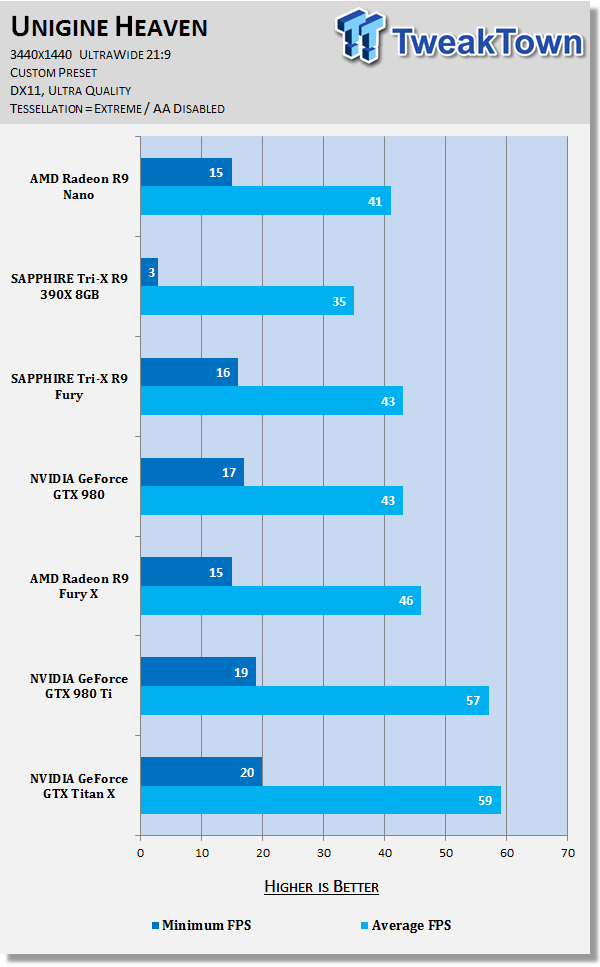
As we explained in our multiple introductions into the R9 Nano earlier in this review, the R9 Nano falls into the third-fastest Fiji-powered card, so we should expect the Nano to be slightly slower than the Fury, which is slower than the Fury X.
Starting with 3DMark at 1080p, we see that the R9 Nano falls right into this spot, where it is 9% faster than the overclocked R9 390X, and 13% slower than the Fury X. Increasing up to the 1440p run of 3DMark, the R9 Nano is 14% slower than the Fury X, while at 4K it is 16% slower.
Okay, it's time for some Heaven. Starting with 1080p, the R9 Nano loses to the Fury by only 1FPS, and to the R9 Fury X by 7FPS, or 9%. At 1440p, the R9 Nano is neck-and-neck with the Fury, both on 53FPS, while the Fury X slides by just... and we mean just, at 55FPS. At 4K, the R9 Nano loses to the Fury once again by a single frame per second, and to the Fury X by 4FPS, or 17%.
Benchmarks - 1080p
Battlefield 4 @ 1080p
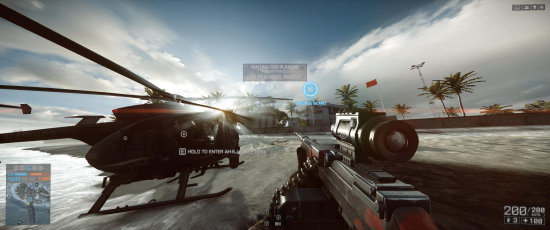
Battlefield 4 makes great use of DICE's incredible Frostbite 3 engine, with some great dynamic destructible environments in both the single-player and multiplayer sides of the game. The same engine has been deployed into many other games made by publisher EA, such as the new Need for Speed, and Mirror's Edge Catalyst.
You can buy Battlefield 4 at Amazon.
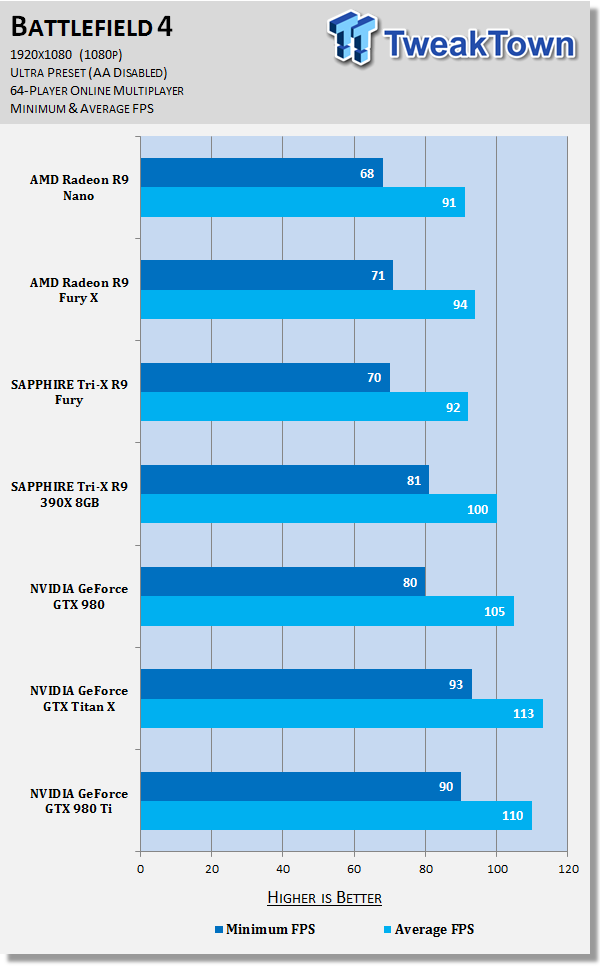
Grand Theft Auto V @ 1080p
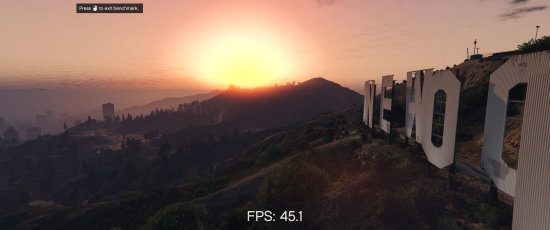
Grand Theft Auto V is one of the best looking open-world games on the market, with Rockstar Games making great use of the power of the PC by offering an optional first-person mode, and the huge upgrade in graphics over its console counterparts.
You can buy Grand Theft Auto V at Amazon.
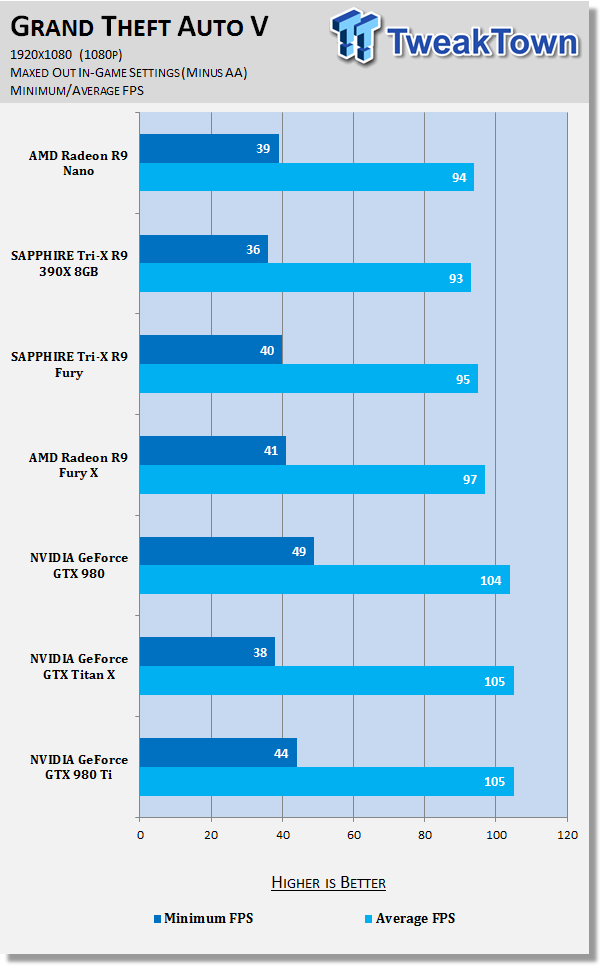
GRID Autosport @ 1080p
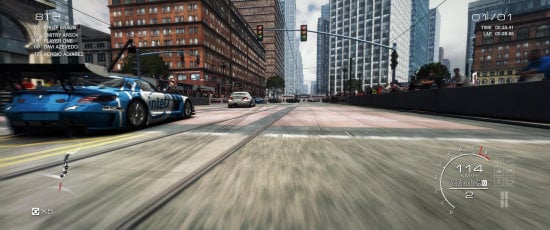
GRID Autosport is powered by Codemasters' own in-house 'EGO 3.0' engine, and while it was released last year, it is still one of the best looking driving games on the market. This is in the face of Forza Motorsport 6, Project CARS, and other driving games. While it looks great, it also runs beautifully even on modest hardware.
You can buy GRID Autosport at Amazon, and you can read our full review here.
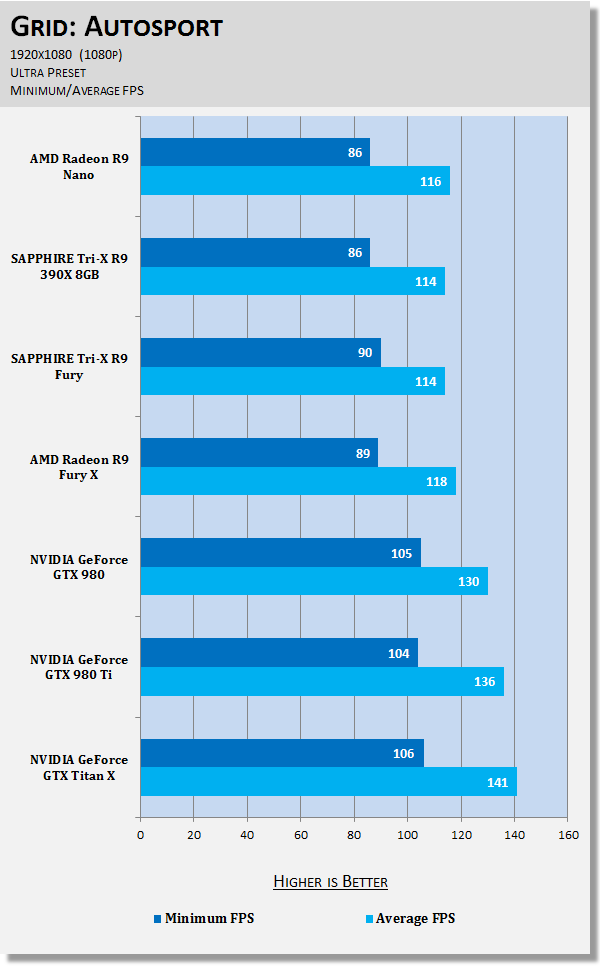
Metro: Last Light Redux @ 1080p
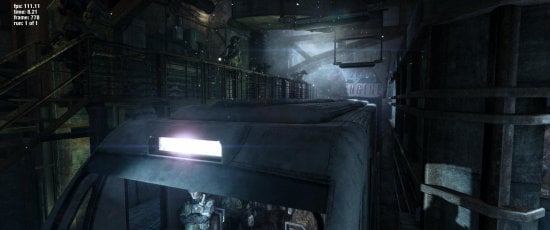
We recently changed over to Metro: Last Light Redux, with developer 4A Games making the Redux version of Metro: Last Light the 'definitive' version of the game. Redux had a fresh coat of paint on the already impressive 4A Engine, and it really pushes our GPUs to their limits.
You can buy Metro: Last Light Redux at Amazon.
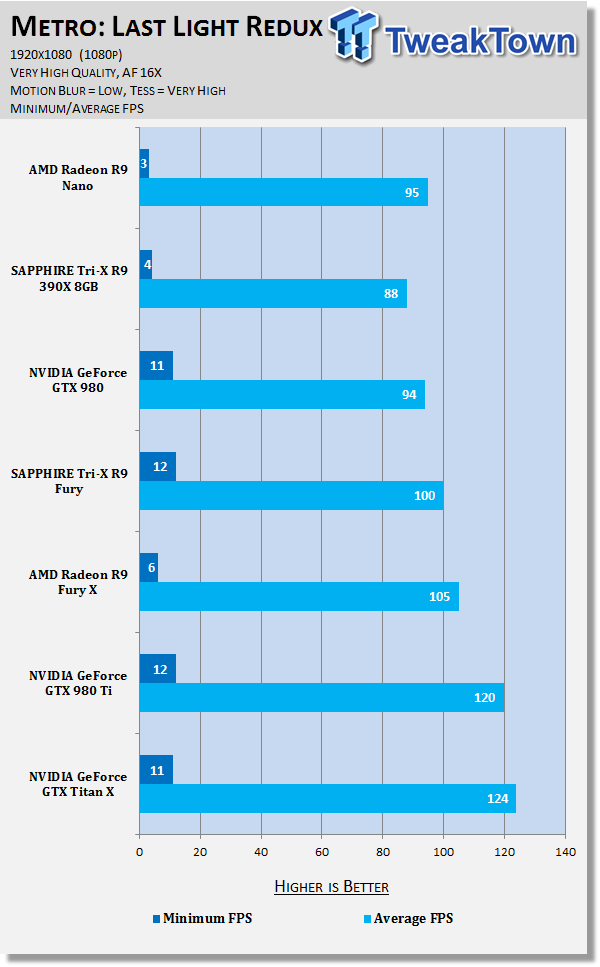
Middle-earth: Shadow of Mordor @ 1080p
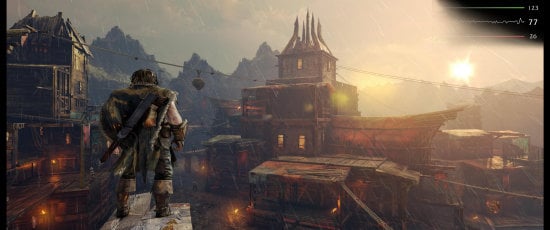
Middle-earth: Shadow of Mordor is one of the most graphically intensive games we test, with Monolith using their own Lithtech engine to power the game. When cranked up to maximum detail, it will chew through your GPU and its VRAM like it's nothing.
You can buy Middle-earth: Shadow of Mordor at Amazon.
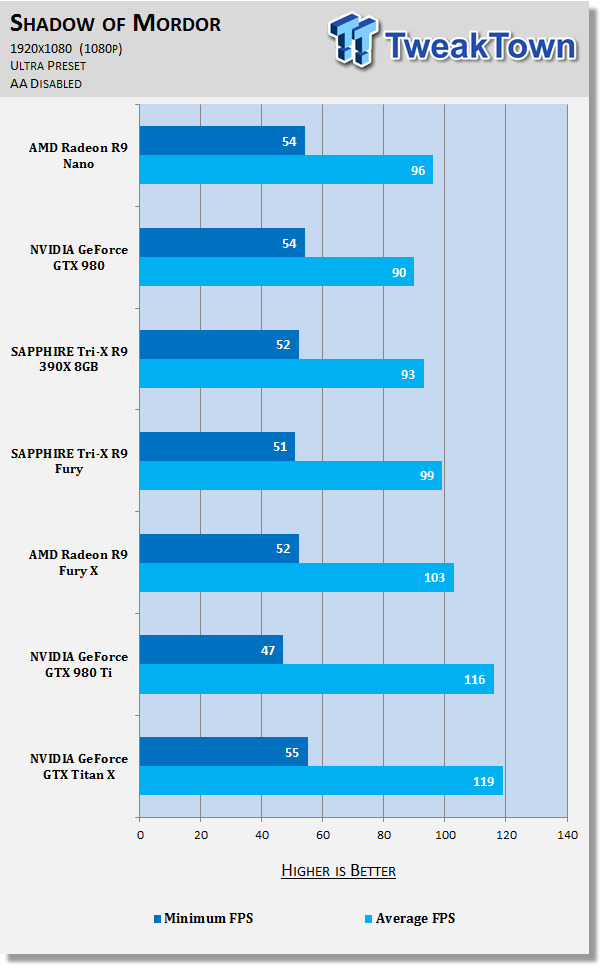
Thief @ 1080p
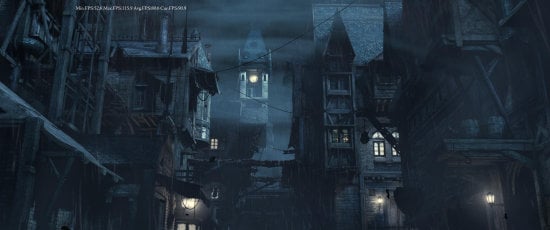
Thief has been around for quite a while now, with the latest version of the first-person stealth game powered by Epic Games' older Unreal Engine 3. While it's old, it has some great multi-GPU scaling that we use to test out our various GPU setups.
You can buy Thief at Amazon.
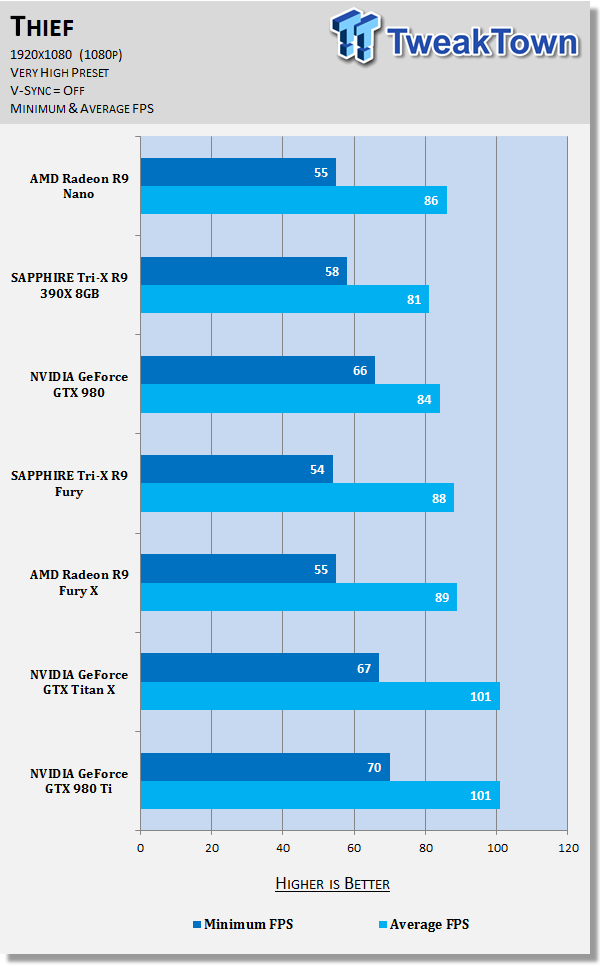
Tomb Raider @ 1080p

Tomb Raider is still such a gorgeous game, with developer Crystal Dynamics using their own 'Foundation' engine to build Lara Croft into the new world. One of the best parts about Tomb Raider is the absolutely stellar multi-GPU scaling, so this is an important test to see how well our NVIDIA GeForce SLI and AMD Radeon Crossfire setups scale.
You can buy Tomb Raider at Amazon.
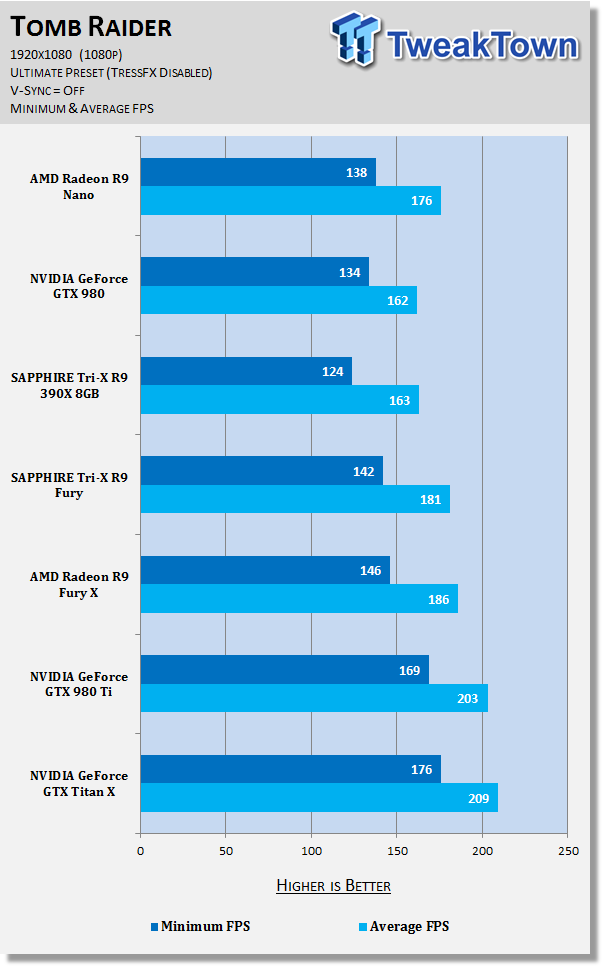
BioShock Infinite @ 1080p
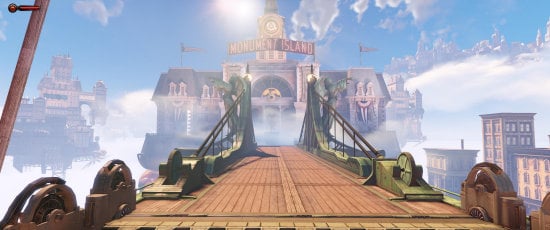
Irrational Games built BioShock Infinite on a heavily modified version of Unreal Engine 3, putting it on the same playing field as Thief. It's still a great game to test on our various video cards, but this is one of the games we will soon be replacing as we get into the end of the year.
You can buy BioShock Infinite at Amazon.
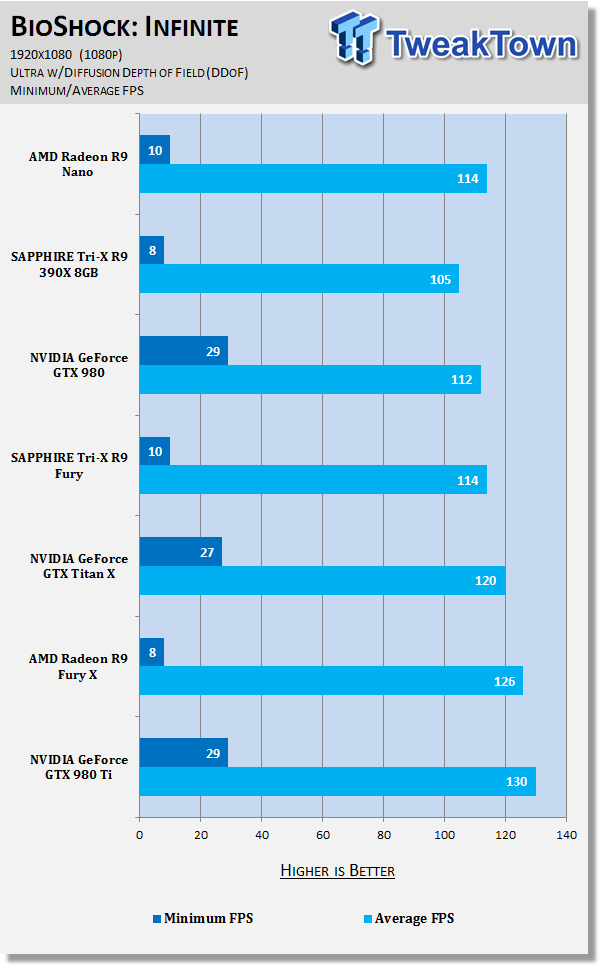
You can find our performance summary of all of our gaming tests later in the review.
Benchmarks - 1440p
Battlefield 4 @ 1440p

Battlefield 4 makes great use of DICE's incredible Frostbite 3 engine, with some great dynamic destructible environments in both the single-player and multiplayer sides of the game. The same engine has been deployed into many other games made by publisher EA, such as the new Need for Speed, and Mirror's Edge Catalyst.
You can buy Battlefield 4 at Amazon.
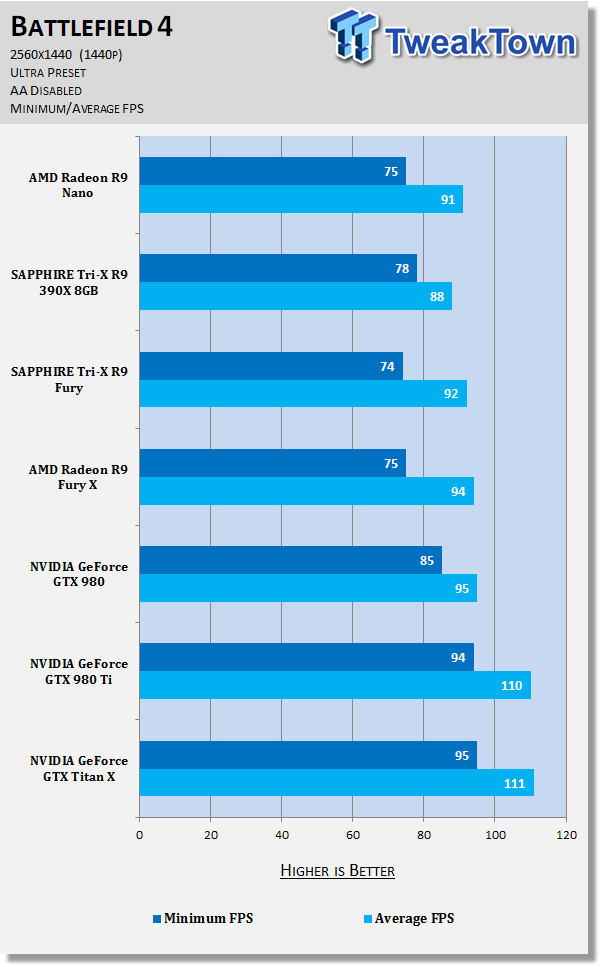
Grand Theft Auto V @ 1440p

Grand Theft Auto V is one of the best looking open-world games on the market, with Rockstar Games making great use of the power of the PC by offering an optional first-person mode, and the huge upgrade in graphics over its console counterparts.
You can buy Grand Theft Auto V at Amazon.
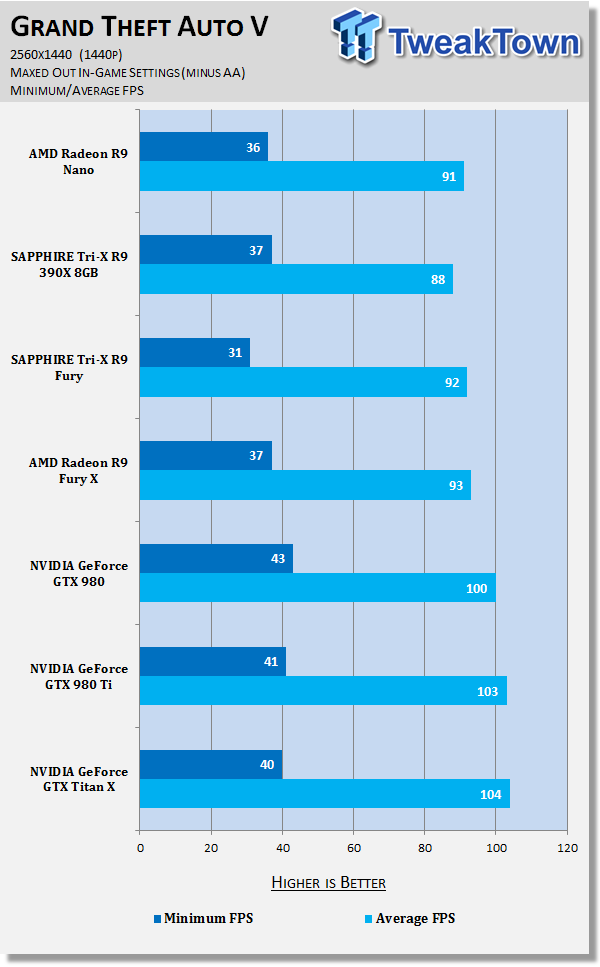
GRID Autosport @ 1440p

GRID Autosport is powered by Codemasters' own in-house 'EGO 3.0' engine, and while it was released last year, it is still one of the best looking driving games on the market. This is in the face of Forza Motorsport 6, Project CARS, and other driving games. While it looks great, it also runs beautifully even on modest hardware.
You can buy GRID Autosport at Amazon, and you can read our full review here.
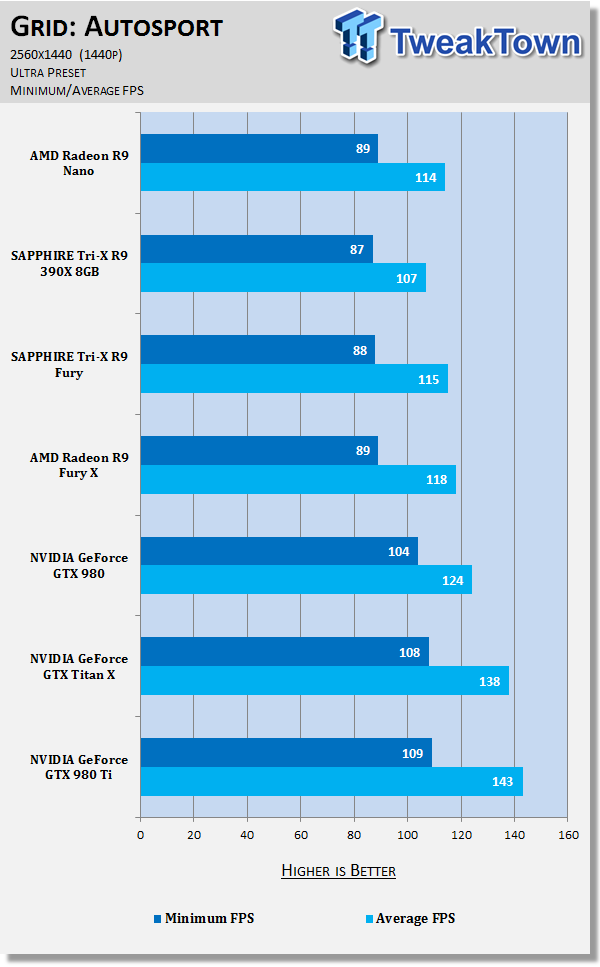
Metro: Last Light Redux @ 1440p

We recently changed over to Metro: Last Light Redux, with developer 4A Games making the Redux version of Metro: Last Light the 'definitive' version of the game. Redux had a fresh coat of paint on the already impressive 4A Engine, and it really pushes our GPUs to their limits.
You can buy Metro: Last Light Redux at Amazon.
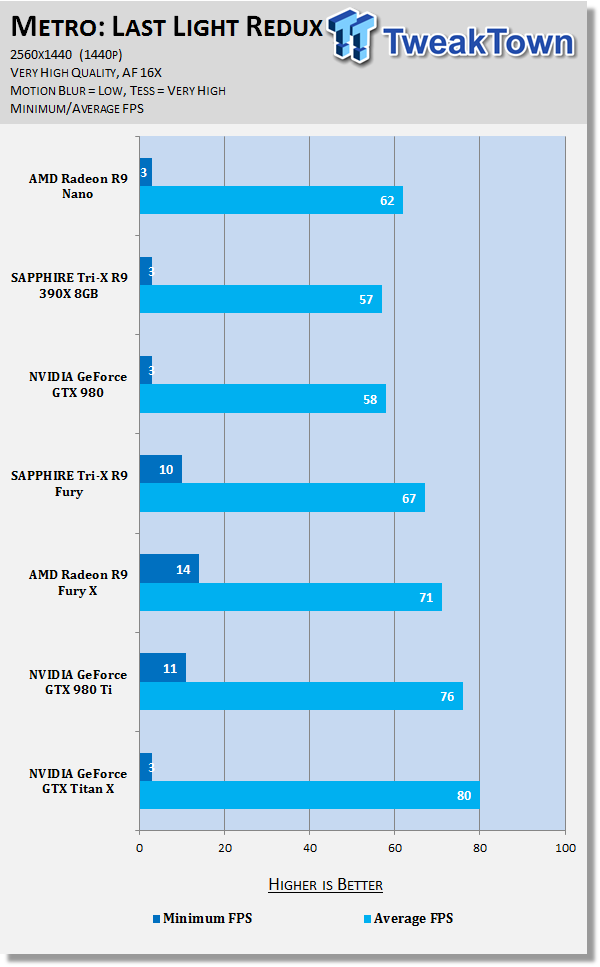
Middle-earth: Shadow of Mordor @ 1440p

Middle-earth: Shadow of Mordor is one of the most graphically intensive games we test, with Monolith using their own Lithtech engine to power the game. When cranked up to maximum detail, it will chew through your GPU and its VRAM like it's nothing.
You can buy Middle-earth: Shadow of Mordor at Amazon.
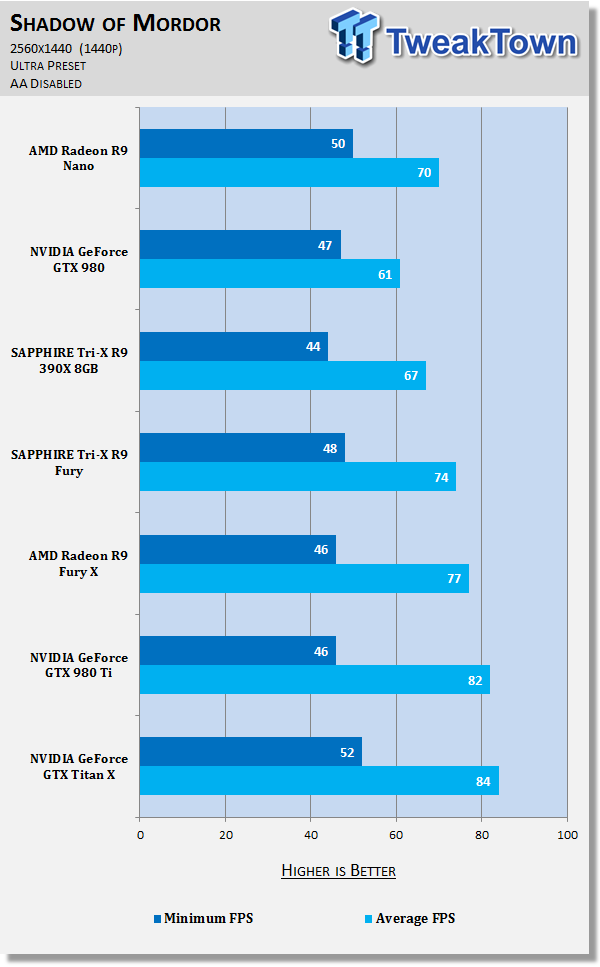
Thief @ 1440p

Thief has been around for quite a while now, with the latest version of the first-person stealth game powered by Epic Games' older Unreal Engine 3. While it's old, it has some great multi-GPU scaling that we use to test out our various GPU setups.
You can buy Thief at Amazon.
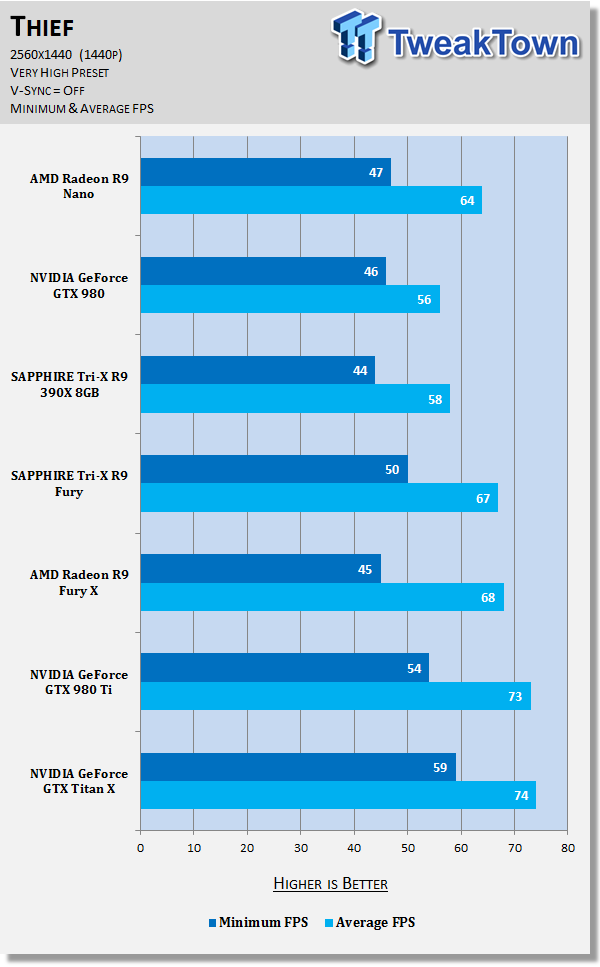
Tomb Raider @ 1440p

Tomb Raider is still such a gorgeous game, with developer Crystal Dynamics using their own 'Foundation' engine to build Lara Croft into the new world. One of the best parts about Tomb Raider is the absolutely stellar multi-GPU scaling, so this is an important test to see how well our NVIDIA GeForce SLI and AMD Radeon Crossfire setups scale.
You can buy Tomb Raider at Amazon.
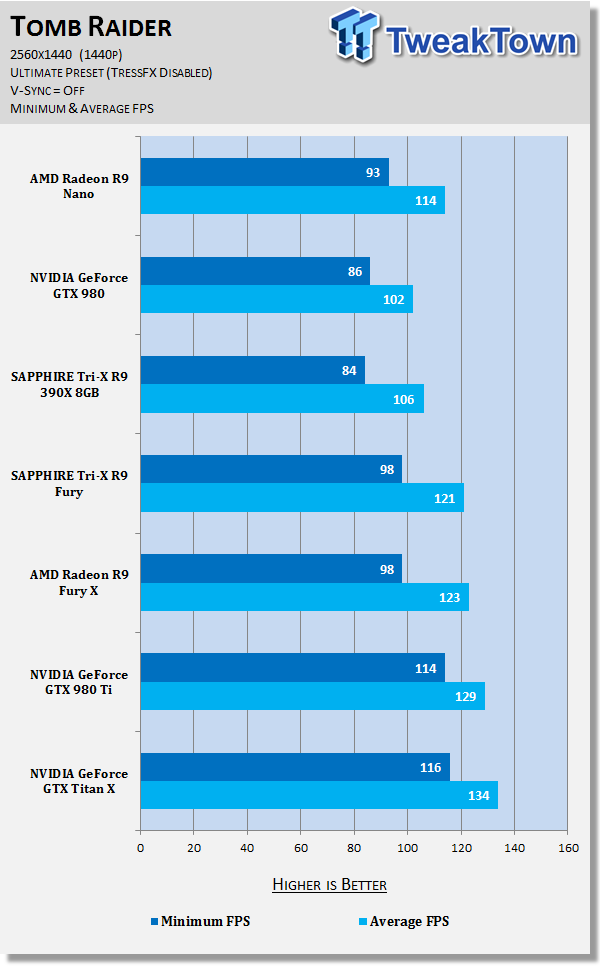
BioShock Infinite @ 1440p

Irrational Games built BioShock Infinite on a heavily modified version of Unreal Engine 3, putting it on the same playing field as Thief. It's still a great game to test on our various video cards, but this is one of the games we will soon be replacing as we get into the end of the year.
You can buy BioShock Infinite at Amazon.
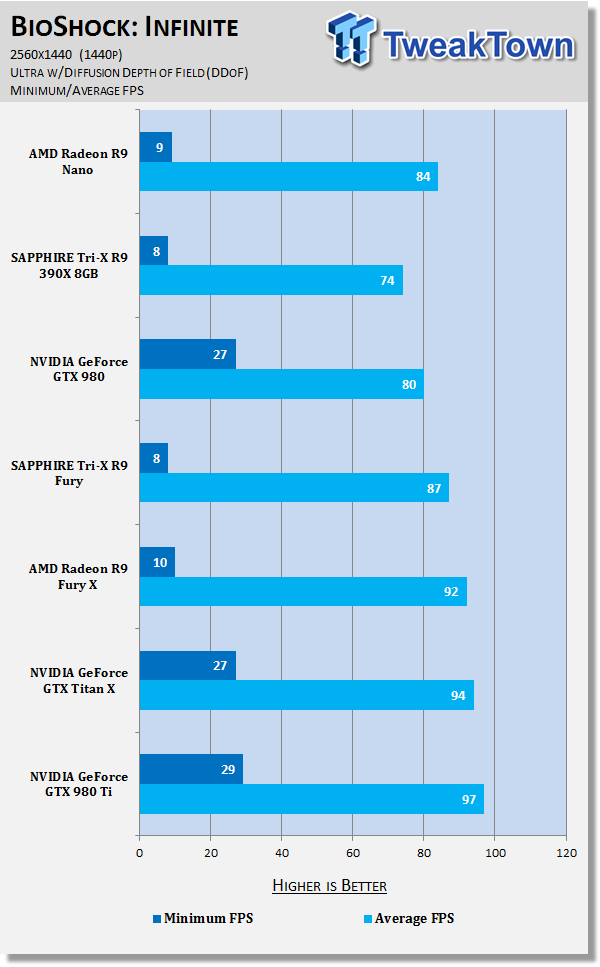
You can find our performance summary of all of our gaming tests later in the review.
Benchmarks - 4K
Battlefield 4 @ 4K (3840x2160)

Battlefield 4 makes great use of DICE's incredible Frostbite 3 engine, with some great dynamic destructible environments in both the single-player and multiplayer sides of the game. The same engine has been deployed into many other games made by publisher EA, such as the new Need for Speed, and Mirror's Edge Catalyst.
You can buy Battlefield 4 at Amazon.
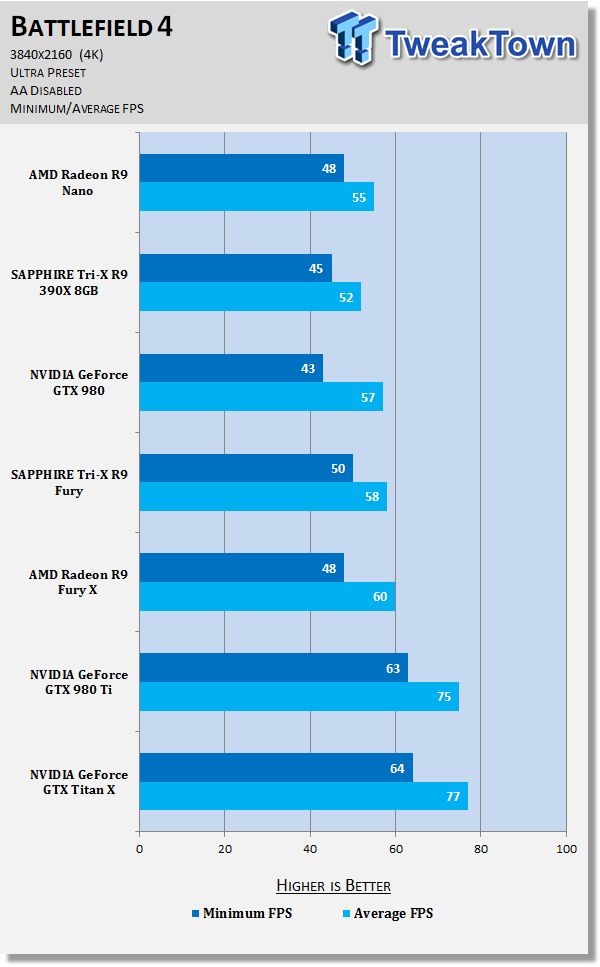
Grand Theft Auto V @ 4K (3840x2160)

Grand Theft Auto V is one of the best looking open-world games on the market, with Rockstar Games making great use of the power of the PC by offering an optional first-person mode, and the huge upgrade in graphics over its console counterparts.
You can buy Grand Theft Auto V at Amazon.
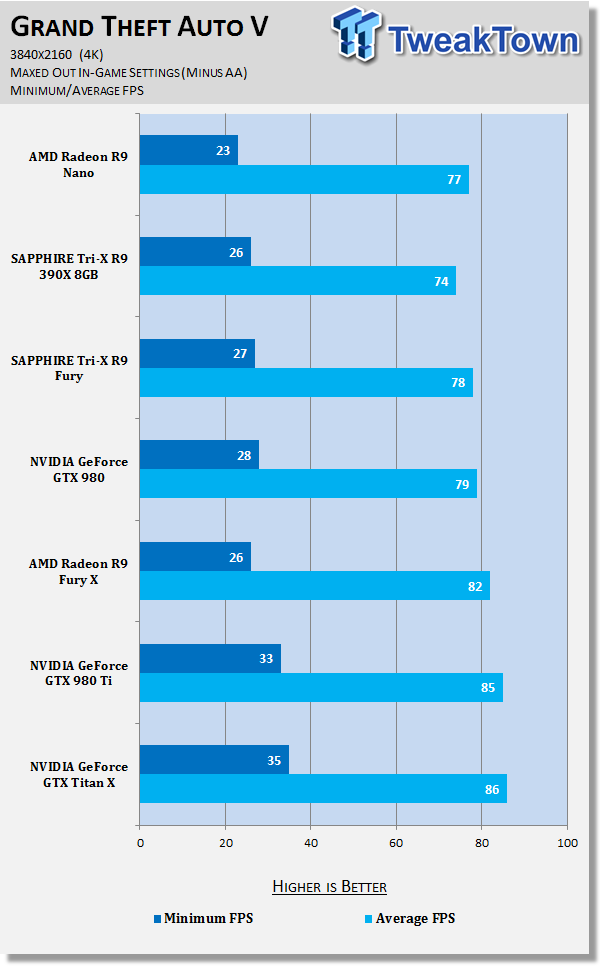
GRID Autosport @ 4K (3840x2160)

GRID Autosport is powered by Codemasters' own in-house 'EGO 3.0' engine, and while it was released last year, it is still one of the best looking driving games on the market. This is in the face of Forza Motorsport 6, Project CARS, and other driving games. While it looks great, it also runs beautifully even on modest hardware.
You can buy GRID Autosport at Amazon, and you can read our full review here.

Metro: Last Light Redux @ 4K (3840x2160)

We recently changed over to Metro: Last Light Redux, with developer 4A Games making the Redux version of Metro: Last Light the 'definitive' version of the game. Redux had a fresh coat of paint on the already impressive 4A Engine, and it really pushes our GPUs to their limits.
You can buy Metro: Last Light Redux at Amazon.
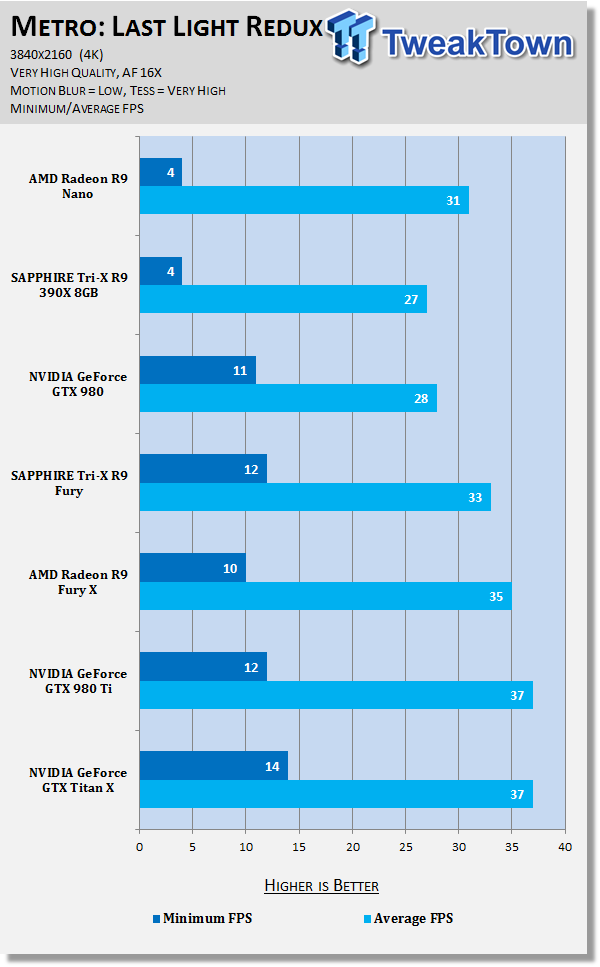
Middle-earth: Shadow of Mordor @ 4K (3840x2160)

Middle-earth: Shadow of Mordor is one of the most graphically intensive games we test, with Monolith using their own Lithtech engine to power the game. When cranked up to maximum detail, it will chew through your GPU and its VRAM like it's nothing.
You can buy Middle-earth: Shadow of Mordor at Amazon.
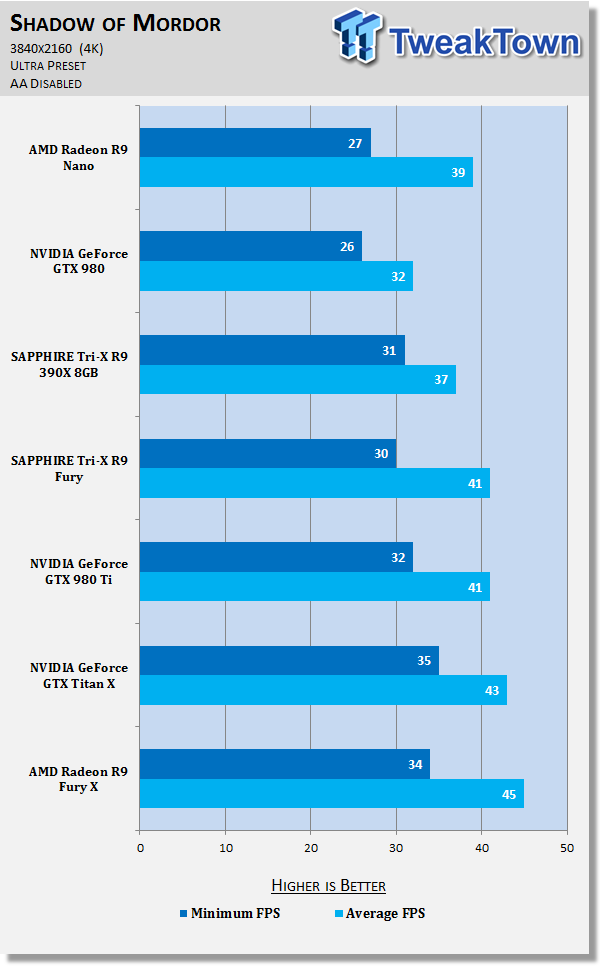
Thief @ 4K (3840x2160)

Thief has been around for quite a while now, with the latest version of the first-person stealth game powered by Epic Games' older Unreal Engine 3. While it's old, it has some great multi-GPU scaling that we use to test out our various GPU setups.
You can buy Thief at Amazon.
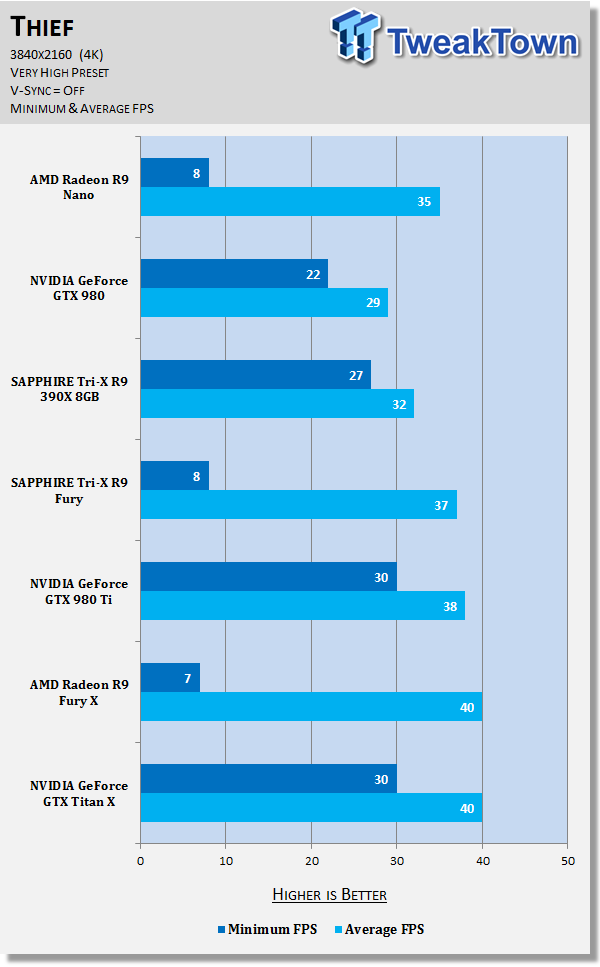
Tomb Raider @ 4K (3840x2160)

Tomb Raider is still such a gorgeous game, with developer Crystal Dynamics using their own 'Foundation' engine to build Lara Croft into the new world. One of the best parts about Tomb Raider is the absolutely stellar multi-GPU scaling, so this is an important test to see how well our NVIDIA GeForce SLI and AMD Radeon Crossfire setups scale.
You can buy Tomb Raider at Amazon.

BioShock Infinite @ 4K (3840x2160)

Irrational Games built BioShock Infinite on a heavily modified version of Unreal Engine 3, putting it on the same playing field as Thief. It's still a great game to test on our various video cards, but this is one of the games we will soon be replacing as we get into the end of the year.
You can buy BioShock Infinite at Amazon.
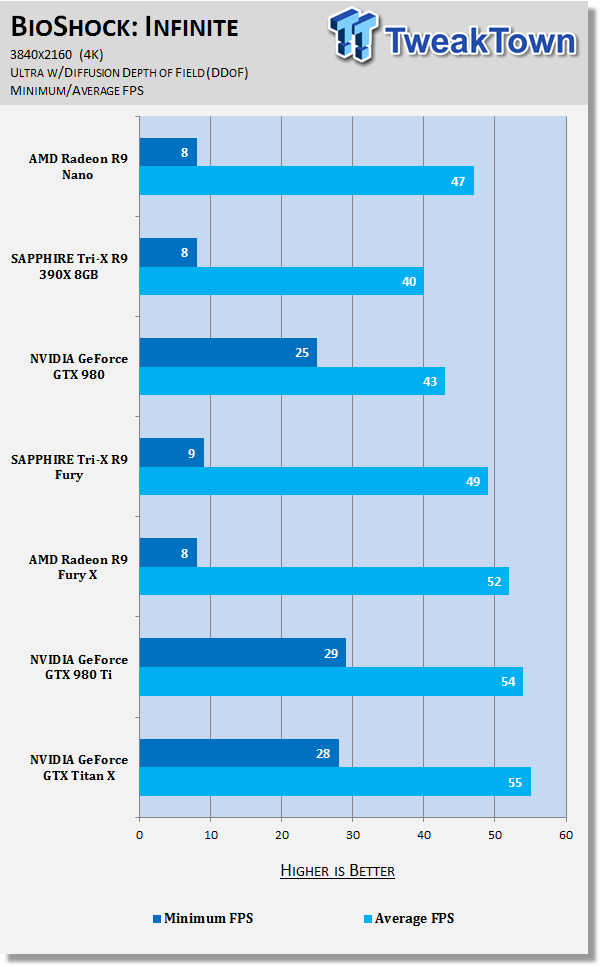
You can find our performance summary of all of our gaming tests later in the review.
Benchmarks - 3440x1440 UltraWide
Battlefield 4 @ UltraWide (3440x1440)

Battlefield 4 makes great use of DICE's incredible Frostbite 3 engine, with some great dynamic destructible environments in both the single-player and multiplayer sides of the game. The same engine has been deployed into many other games made by publisher EA, such as the new Need for Speed, and Mirror's Edge Catalyst.
You can buy Battlefield 4 at Amazon.
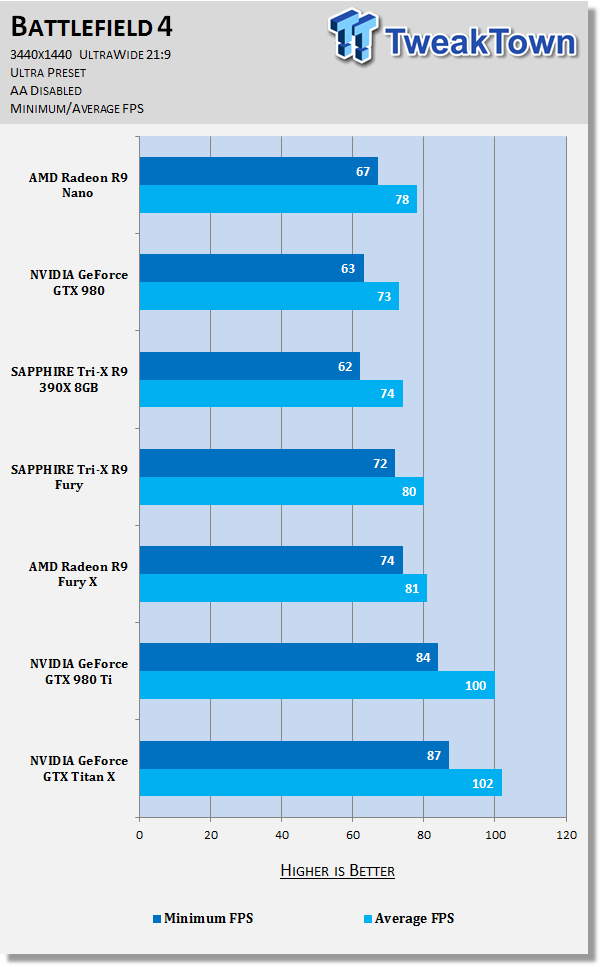
Grand Theft Auto V @ UltraWide (3440x1440)

Grand Theft Auto V is one of the best looking open-world games on the market, with Rockstar Games making great use of the power of the PC by offering an optional first-person mode, and the huge upgrade in graphics over its console counterparts.
You can buy Grand Theft Auto V at Amazon.
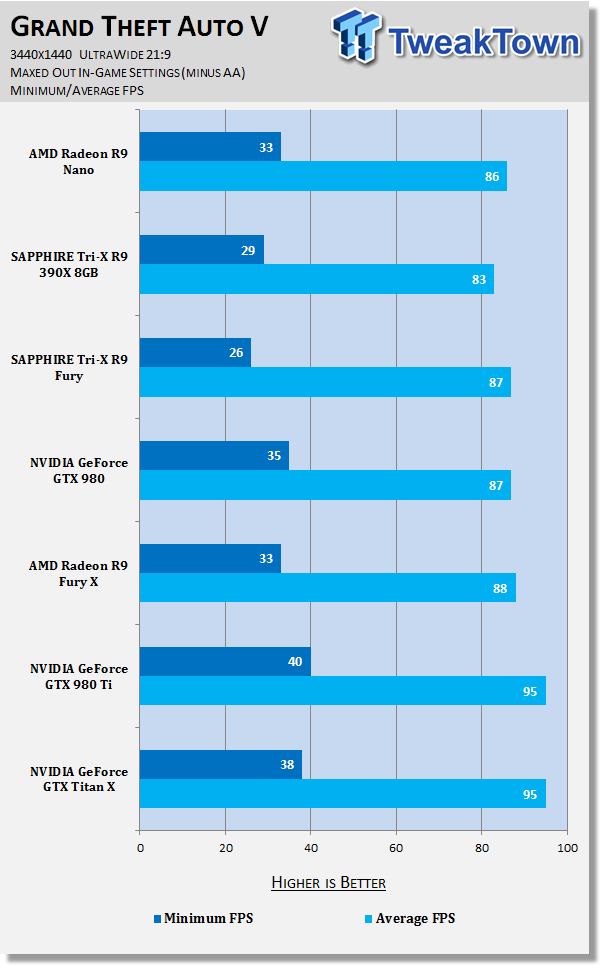
GRID Autosport @ UltraWide (3440x1440)

GRID Autosport is powered by Codemasters' own in-house 'EGO 3.0' engine, and while it was released last year, it is still one of the best looking driving games on the market. This is in the face of Forza Motorsport 6, Project CARS, and other driving games. While it looks great, it also runs beautifully even on modest hardware.
You can buy GRID Autosport at Amazon, and you can read our full review here.

Metro: Last Light Redux @ UltraWide (3440x1440)

We recently changed over to Metro: Last Light Redux, with developer 4A Games making the Redux version of Metro: Last Light the 'definitive' version of the game. Redux had a fresh coat of paint on the already impressive 4A Engine, and it really pushes our GPUs to their limits.
You can buy Metro: Last Light Redux at Amazon.
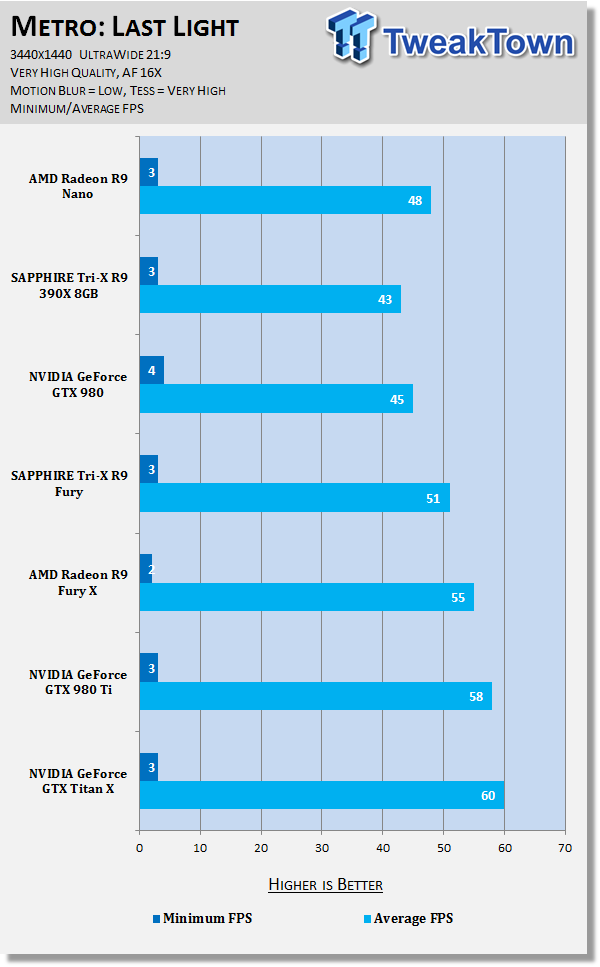
Middle-earth: Shadow of Mordor @ UltraWide (3440x1440)

Middle-earth: Shadow of Mordor is one of the most graphically intensive games we test, with Monolith using their own Lithtech engine to power the game. When cranked up to maximum detail, it will chew through your GPU and its VRAM like it's nothing.
You can buy Middle-earth: Shadow of Mordor at Amazon.
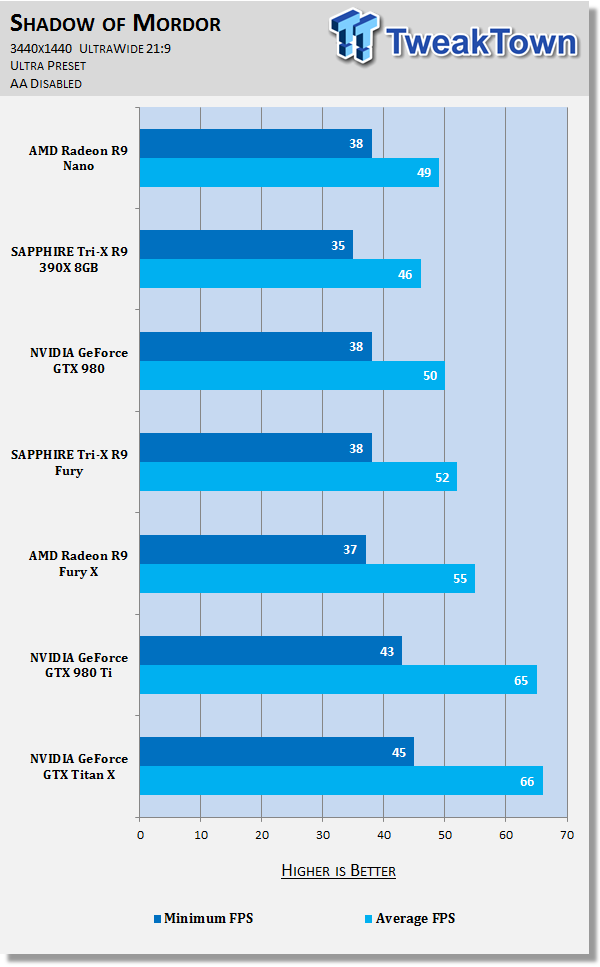
Thief @ UltraWide (3440x1440)

Thief has been around for quite a while now, with the latest version of the first-person stealth game powered by Epic Games' older Unreal Engine 3. While it's old, it has some great multi-GPU scaling that we use to test out our various GPU setups.
You can buy Thief at Amazon.
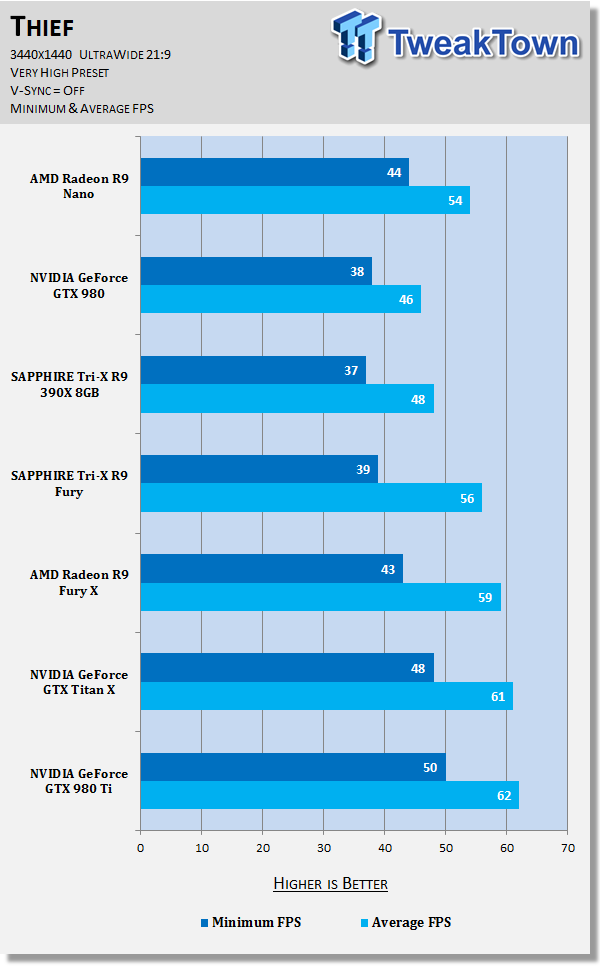
Tomb Raider @ UltraWide (3440x1440)

Tomb Raider is still such a gorgeous game, with developer Crystal Dynamics using their own 'Foundation' engine to build Lara Croft into the new world. One of the best parts about Tomb Raider is the absolutely stellar multi-GPU scaling, so this is an important test to see how well our NVIDIA GeForce SLI and AMD Radeon Crossfire setups scale.
You can buy Tomb Raider at Amazon.
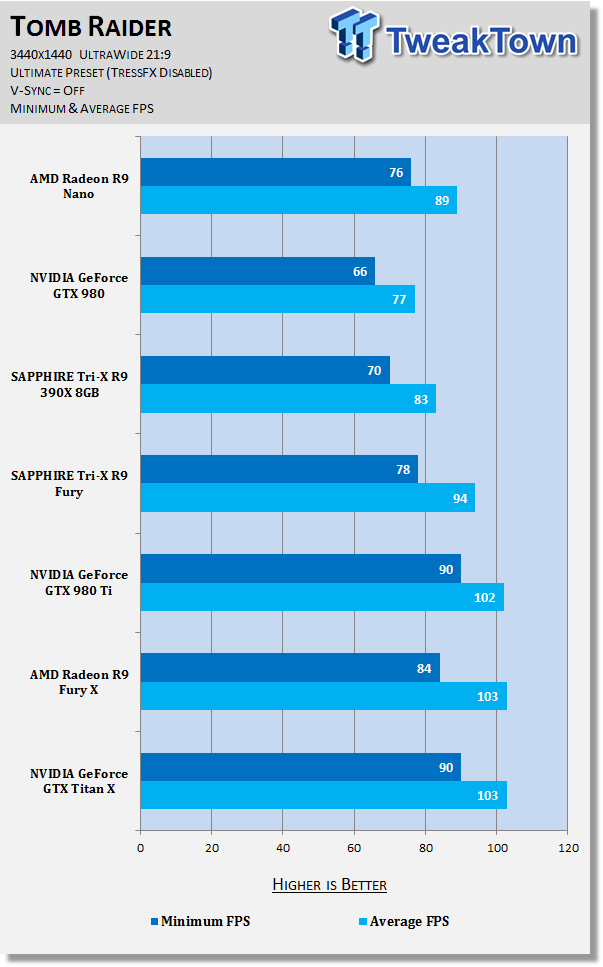
BioShock Infinite @ UltraWide (3440x1440)

Irrational Games built BioShock Infinite on a heavily modified version of Unreal Engine 3, putting it on the same playing field as Thief. It's still a great game to test on our various video cards, but this is one of the games we will soon be replacing as we get into the end of the year.
You can buy BioShock Infinite at Amazon.
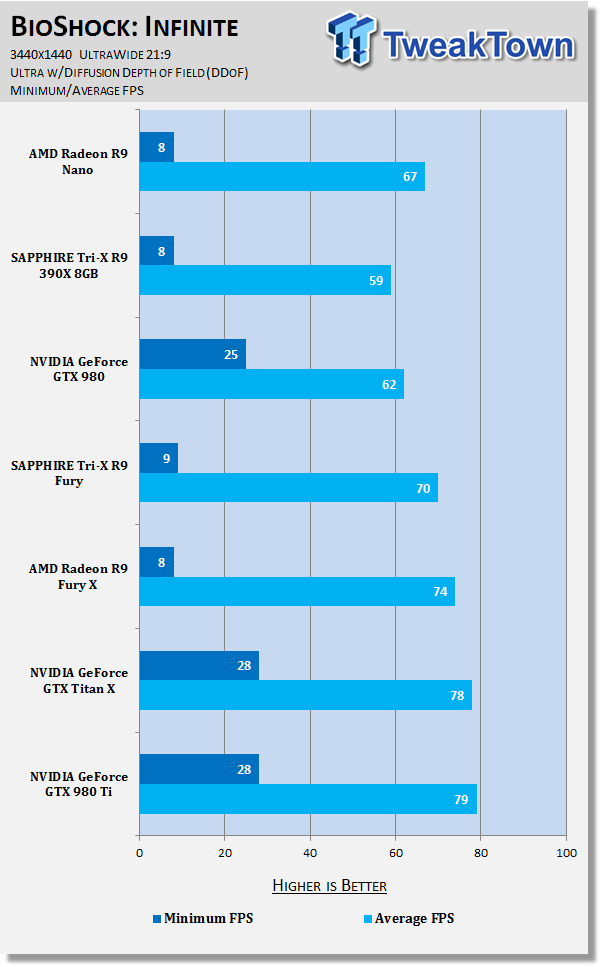
You can find our performance summary of all of our gaming tests later in the review.
Performance Summary
AMD Now Owns the Mini-ITX GPU Market
There's no doubt about it: AMD has killed the mini-ITX gaming PC market with the new R9 Nano. It's a card that provides Fury X like performance for the same $649 price, all while doing so without the AIO cooler, and of course a much smaller size.
Below, we have the performance summary for our four resolutions, with the inclusion of 3440x1440 - our new UltraWide 21:9 resolution. I think that the new R9 Nano is the perfect card for a small PC, where it really shines. Outside of that, if you were to buy one and install it into your current gaming PC that could house anything up to a bigger GTX 980 Ti or Titan X, I think - no, I know you're better off on the NVIDIA GeForce side of things.
But in all of AMD's marketing materials, the company compares it against the GTX 970; that is a card that can be found for $349, compared to the $649 on the R9 Nano. At $649, NVIDIA has the GTX 980 Ti, which smacks the pants off of the R9 Nano, but AMD wouldn't want to compare their new R9 Nano against a card that easily beats it, right?
Performance at 1080p
We won't spend too much time at 1080p, as you won't be spending $649 on the R9 Nano to game at 1080p. But, there will be some people who will buy the R9 Nano and game at 1080p, so we want to see 60FPS minimum and into the 100-120FPS from the Fiji-powered card. Starting with Battlefield 4, the R9 Nano is more than capable of delivering an awesome gaming experience with an average of 91FPS. With a few details turned down, you could easily sail pass 120FPS for those with 120-144Hz monitors.
GRID: Autosport slides around the tracks with 116FPS, just 2FPS south of the 118FPS on the full-fledged Fury X. Metro: Last Light Redux is another game that sees the R9 Nano spitting out way more than playable numbers at 1080p, with an average of 95FPS - just 10FPS behind the Fury X.
Even in a stressful game like Middle-earth: Shadow of Mordor, the super-small R9 Nano manages 96FPS average - not bad considering the Fury X is only ahead by 7FPS with 103FPS average. Thief pushes out 86FPS average at 1080p on the R9 Nano, while Tomb Raider soars with a huge 176FPS average.
All in all, 1080p is an excellent experience on the R9 Nano. This is the type of resolution you're going to be playing with it on, especially with AMD pushing for these cards to be used in the living room. And with the lack of HDMI 2.0, at least you can enjoy some 60FPS gaming at 1080p with HDMI 1.4.
Performance at 1440p
Performance at 2560x1440 is just as impressive on the R9 Nano as it was at 1080p, with Battlefield 4 managing 91FPS - the same result that we saw at 1080p. Again, with a few details turned down, you could be enjoying 120-144FPS on the R9 Nano on those high refresh rate monitors that I love to game on. And with FreeSync thrown into the mix, you're in for a real gaming treat.
60FPS is where we're aiming for an enjoyable experience on the R9 Nano, and with any card priced at the heights of $649, with Metro: Last Light Redux seeing 62FPS on the R9 Nano. The Fury X is a bit more capable here, with 71FPS average.
Moving onto Shadow of Mordor, where the R9 Nano sees 70FPS average compared to the Fury X with 77FPS. Again, anything over 60FPS here is gravy. Thief keeps things over 60FPS average, with the R9 Nano managing 64FPS average at 1440p versus 68FPS average on the Fury X. Lastly, we have Tomb Raider with not a care in the world about the resolution, with Lara Croft enjoying 114FPS average on the R9 Nano compared to 123FPS on the Fury X.
Performance at 4K
This is where AMD is pushing the R9 Nano; 4K gaming. The Fiji-powered, HBM-based card is more than capable of 4K gaming, except for its limitation of not having HDMI 2.0. We've talked about this before, but you can still enjoy 4K gaming over the DisplayPort connectivity on the card - but how does it perform? Kicking things off with Battlefield 4, the R9 Nano gets close to 60FPS with 55FPS average, while the Fury X hits the 60FPS boundary. With a detail or two notched down, 60FPS in Battlefield 4 is very, very achievable.
Metro: Last Light Redux is a lot harder on a video card at 4K, with the R9 Nano managing 31FPS average compared to 35FPS on the Fury X. We have similar results with Shadow of Mordor, with 39FPS average on the R9 Nano versus 45FPS on the Fury X. Not too bad at all for a game as strenuous as Shadow of Mordor. I expected a little more from Thief, but the R9 Nano manages 35FPS average, while Tomb Raider has the super-small R9 Nano pushing a much more playable 52FPS. Wrapping up 4K performance, with a few in-game visual settings, you could hit 60FPS at 4K without a problem on the R9 Nano.
Performance at 3440x1440 (UltraWide)
This is the newest part of our video card coverage, the inclusion of UltraWide 21:9 results at 3440x1440. It's an interesting resolution, as it's a great middle ground between 2560x1440 (1440p) and 3840x2160 (4K).
Starting with Battlefield 4, the new HBM-powered R9 Nano is capable of 78FPS average, a great result and more than playable as it's over 60FPS. The Fury X is only just ahead at 3440x1440, with 81FPS average. Metro: Last Light Redux is another interesting game for UltraWide, with the R9 Nano spitting out 48FPS average, compared to 31FPS at 4K. This is a big reason why we're looking at UltraWide results now - that's 54% improvement in frame rates between 4K and 3440x1440.
Shadow of Mordor lapped up the R9 Nano's power at 3440x1440 with 49FPS average, compared to the 55FPS on the Fury X - an improvement of 26% from the results at 4K. Moving over to Thief, the R9 Nano managed a more than playable 54FPS average - a 54% increase from the 4K results which were just 35FPS.
Lastly, we have Tomb Raider which the R9 Nano performed admirably, with 89FPS average. Looking back at the 4K results of Tomb Raider on the R9 Nano with 52FPS, this means we're looking at a 71% increase in performance by using 3440x1440 instead of 4K.
Power Consumption and Sound Testing
Power Consumption
This is where the R9 Nano shines against the Fury X, in power consumption. While the full Fury X scoops up 275W TDP, the R9 Nano downsizes that by 100W for a TDP of just 175W. Credit has to be given to AMD's engineering team, which squeezed and optimized the R9 Nano to hit this target.
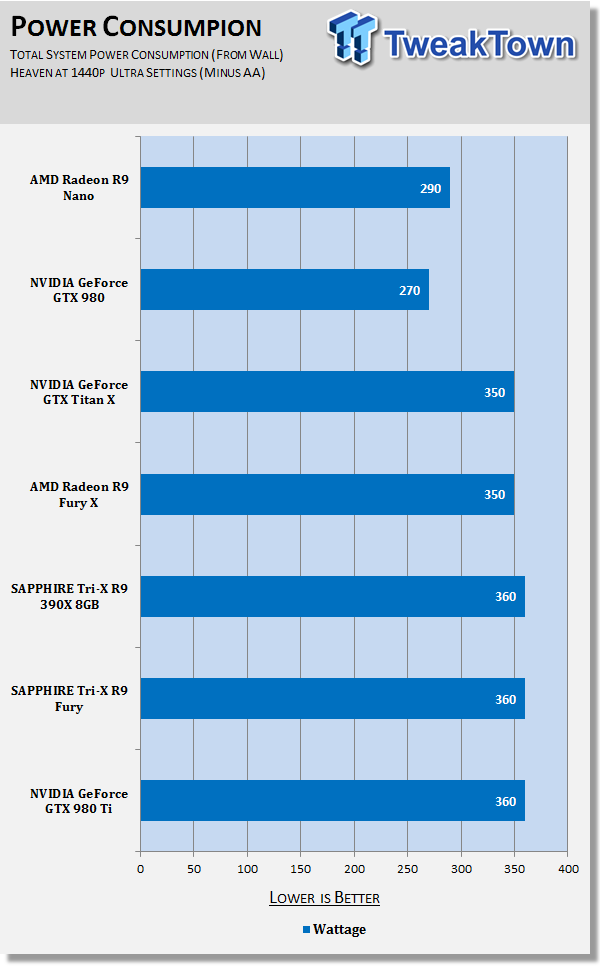
As you can see, it's the most power efficient card on our charts. This is one of the huge highlights of the R9 Nano, that it has Fury X like performance, with 100W shaved off of its TDP.
Sound Testing
Man oh man, does the R9 Nano make some noise - but not in the way you'd expect. The fan itself is about what I expected, but the coil whine is just atrocious. It's just so, so bad. It's the worst I've heard, worse than the Fury X and its issues with pump noise.
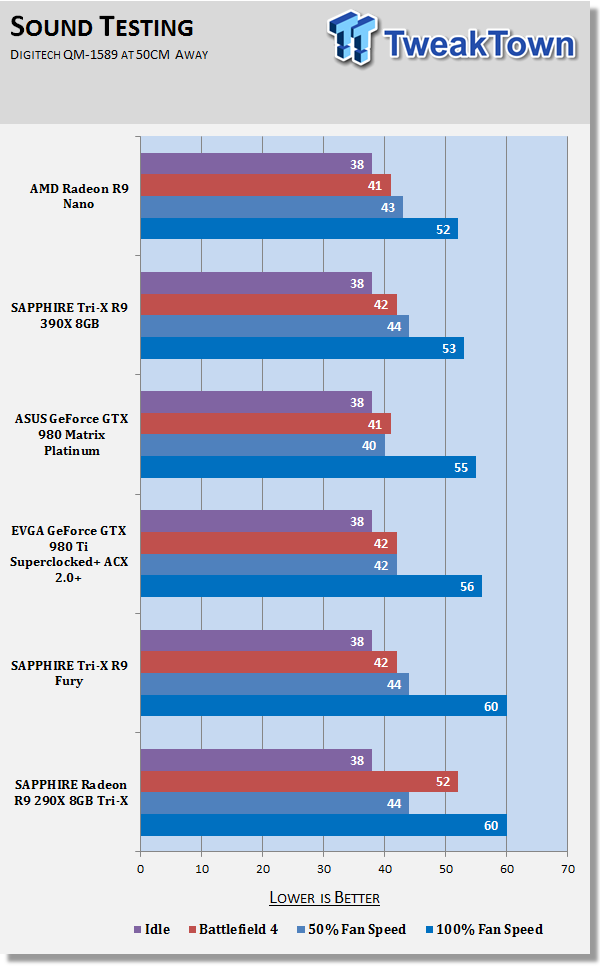
What's Hot, What's Not & Final Thoughts 1.0
This is where you can fast forward to the final section of the review, and get a quick recap and points on the super-small AMD Radeon R9 Nano.
What's Hot
It's So Small, It's Almost Cute: The AMD Radeon R9 Nano is impossibly small. It's just so tiny, and even for someone like myself who gets in countless video cards per month, this is one of, if not, the most impressive yet. It's shorter than the x16 PCIe port that it gets installed into.
The Best Use of HBM Yet: If there are benefits to HBM, which we aren't seeing in performance just yet, it's in the physical size of HBM-powered video cards. The Fury X was small, but the R9 Nano is like the Ant-Man of video cards.
It May Be Small, But It Packs A Performance Punch: While it's small, the R9 Nano is damn close to the performance of the full-blown Fury X. It keeps up with a GTX 980 Ti in some ways, but ultimately loses to NVIDIA's GM200 GPU. But, the GTX 980 Ti is also double the length.
175W TDP: The Fury X has a TDP of 275W, while the R9 Nano shaves off 100W. AMD has done some nifty things inside of the card and to the power management of the Fiji architecture achieve this, which is great. A single 8-pin PCIe power connector is all that's needed.
The Best Video Card For Tiny Gaming PCs: There's nothing that comes close to the R9 Nano when it comes to mini-ITX video cards. If you're building a mini-ITX gaming PC, the R9 Nano should be at the top of your shopping list.
UltraWide Champion: 4K gaming is great, but UltraWide gaming at 3440x1440 is truly something else. It requires far less stress on the GPU, and it provides even better results. We had an average of 50% more performance at 3440x1440 on the R9 Nano versus 4K. This is definitely something you should think about when picking up the R9 Nano. You could build yourself a tiny UltraWide gaming PC and enjoy 60FPS+ without a problem.
What's Not
Major Coil Whine: This is seriously annoying, but only in an open test bed. Inside of a system it will be much better, but I need to question this. Is AMD having issues with the Fiji-based cards? Because the Fury X had serious whine from the cooler too, but the R9 Nano doesn't have a watercooler or a pump. What gives?
There's Now No Reason For The Fury X: Our testing shows that the R9 Nano falls within around 10% less performance of the Fury X, making the Fury X mostly completely useless in our eyes. Why would you want a massive cooler that needs to be installed somewhere in your system when you can go with a card that has a standard cooler, and 100W less power consumption? It's a no brainer for me.
Lack of HDMI 2.0: Seriously, AMD? We talked about this when you unveiled the cards, and you said there will be active DisplayPort to HDMI 2.0 adapters, but this shouldn't be needed. A card that is marketed towards gamers wanting a tiny gaming PC in the living room and it doesn't have HDMI 2.0? That means you're limited to 4K at 30Hz... 1080p gamers will be fine, but this is a $649 card aimed at enthusiasts. 4K 60FPS gaming is what it should be aiming for. Tsk, tsk!
Final Thoughts 1.0
If I was in charge of marketing the new AMD cards, I would've made the R9 Nano the card I pushed most. It's the most 'new', the most 'exciting' and the most impressive card out of the entire Fiji-powered lineup. It's the best demonstration of High Bandwidth Memory and its far-reaching benefits, too. I would've held off on the Fury X and waited until the dual-GPU was ready, launching just the R9 Nano in as many numbers as possible. The normal Fury would've been something I would've allowed AIB partners to overclock the absolute hell out of, while I waited in the wings with the dual Fiji GPU card. I would not have cared if the card consumed 500W+ of power, because I would've made the performance worth it.
In an ideal world, the Fury X would be a dual-GPU with 8GB of HBM1 (4GB per GPU) and then the R9 Fury would be single GPU version, at 275W TDP. The R9 Nano should've been the bragging rights card for competing against NVIDIA's GeForce GTX 980, while the R9 Fury fought the 980 Ti and the Fury X (a dual-GPU card in my world) could've been the new R9 295X2 that smashed everything NVIDIA has to offer.
Instead, what we have here today is a product stack that is confusing. The R9 Nano is just a few percentage points slower than the R9 Fury, and the R9 Fury is a few percentage points slower than the Fury X. The R9 Nano is air cooled and super-small, while the R9 Fury - which is just a bit faster - is a gigantic behemoth. Leaving the Fury X with a massive AIO cooler and 100W more power consumption on top of the R9 Nano. What the hell?!
The R9 Fury is now useless - there's absolutely no point for this card to exist, apart from the fact that AIB partners need to make a Fiji-powered product. The Fury X, as I said in the headline of my review, is dead. The R9 Fury X is now dead. The R9 Nano is everything the Fury X should've been, and if AMD made it a bit bigger and let it enjoy some more power, the AIO cooler fiasco could've been avoided.
This is why my 'Final Thoughts' has been split into two. There's so much going on with the R9 Nano that it really deserves to be talked about in detail to wrap it all up. We finish up on the next page.
Final Thoughts 2.0
The AMD Radeon R9 Nano is a good video card, but falls short of greatness. But in saying that, the R9 Nano is the most exciting card that AMD has made in quite some time. The last time AMD had me this impressed was with the R9 290X, and before that it was a very long time ago.
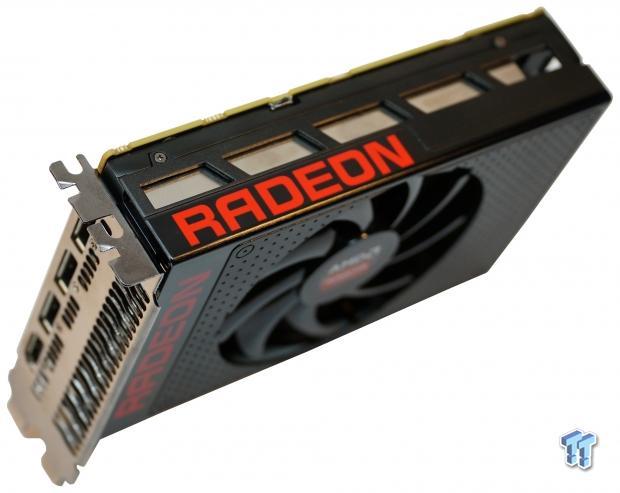
The R9 Nano offers Fury X-like performance, where it is only 10-15% slower than the full-fledged, AIO cooler-powered Fury X. But, this is not a traditional video card that comes out and competes with X, Y or Z from NVIDIA. The R9 Nano stands on its own, in a market that it could easily dominate, but it won't.
Right now, I can no longer recommend the Fury X. That card is dead to me. The card that AMD has that it now needs to push into as many consumers' hands as possible, is the R9 Nano. It's a tiny card that packs performance well above it size, but then we arrive into the second big issue: price. At $649, it's not a cheap card. But AMD can't price it any lower considering it's pretty much a Fury X that has had a little cut off the edges.
If the R9 Nano was priced at $399, then... well... it would be a completely different picture. But when the R9 Nano is priced at $649, and the Fury X is priced at $649, what do you buy? Do you want the additional performance from the Fury X, or do you want the simplicity and look of the R9 Nano. Hint: get the R9 Nano. If the R9 Nano uses 175W of power and comes within ~15% of the performance of the water cooling-required Fury X, then what the hell is that additional 100W doing? It's not providing another 50% in performance, that's for sure.
This doesn't make the R9 Nano a bad card, but it definitely makes the Fury X an even worse card than it was at launch. There's absolutely no need for the Fiji GPU or HBM to be water cooled, so the Fury X is dead. The R9 Nano is now the crown jewel of AMD's setup, but it has some roadblocks. The $649 price doesn't help, and nor will the lack of HDMI 2.0. The omission of HDMI 2.0 makes no sense to me, as it feels like the Fiji architecture is stuck somewhere in 2013, while using 2015 technology in the form of HBM. Why in the world would AMD cram HDMI 1.4 into their latest and greatest video cards, I'll never know.
Wrapping up, do I recommend the R9 Nano? Definitely. If you're a member of Team Red, this is the card you have been waiting for, especially if you skipped over the Fury X. If you're in the market of building a new mini-ITX gaming PC, then the R9 Nano should be the only card you're looking at. It's going to introduce an entire new class of gaming PCs that can be super-small, but super-powerful. The Fury X need not apply.
But for everyone else, no. I think right now that the best video card for gaming is the GeForce GTX 980 Ti, as it offers some incredible value for money and there's a slew of different cards from the likes of ASUS, ZOTAC, MSI, and countless others who have weird and whacky GM200-powered cards. What AMD has here with the R9 Nano is the most interesting and in a way, innovative video card we've seen in quite a while. It's all thanks to HBM, but I think that AMD has a bit of tweaking to do before it really hits its stride. Even though it's not a perfect video card, it still earns our Best Features award given what it did do right.

| Performance (overclocking, power) | 90% |
| Quality (build, design, cooling) | 95% |
| General Features (display outputs, etc) | 80% |
| Bundle, Packaging & Software | 95% |
| Value for Money | 90% |
| Overall | 90% |
The Bottom Line: AMD's Radeon R9 Nano is one of the most unique video cards ever. It's flawed, but it's a great evolution of the Fury X. This is what the Fury X should've been, so I'll say it again: the Fury X is dead.
PRICING: You can find products similar to this one for sale below.
 United
States: Find other tech and computer products like this
over at Amazon.com
United
States: Find other tech and computer products like this
over at Amazon.com
 United
Kingdom: Find other tech and computer products like this
over at Amazon.co.uk
United
Kingdom: Find other tech and computer products like this
over at Amazon.co.uk
 Australia:
Find other tech and computer products like this over at Amazon.com.au
Australia:
Find other tech and computer products like this over at Amazon.com.au
 Canada:
Find other tech and computer products like this over at Amazon.ca
Canada:
Find other tech and computer products like this over at Amazon.ca
 Deutschland:
Finde andere Technik- und Computerprodukte wie dieses auf Amazon.de
Deutschland:
Finde andere Technik- und Computerprodukte wie dieses auf Amazon.de
What's in Anthony's PC?
- CPU: Intel Core i5-12600K
- MOTHERBOARD: GIGABYTE Z690 AERO-G
- RAM: Corsair 32GB DDR4-3200
- GPU: NVIDIA GeForce RTX 4090 24GB
- SSD: Sabrent 4TB Rocket 4 Plus
- OS: Windows 11 Pro
- CASE: Lian Li O11 Dynamic XL
- PSU: ASUS ROG Strix 850W
- KEYBOARD: Logitech G915 Wireless
- MOUSE: Logitech G502X Wireless
- MONITOR: LG C3 48-inch OLED TV 4K 120Hz
Similar Content
Related Tags

